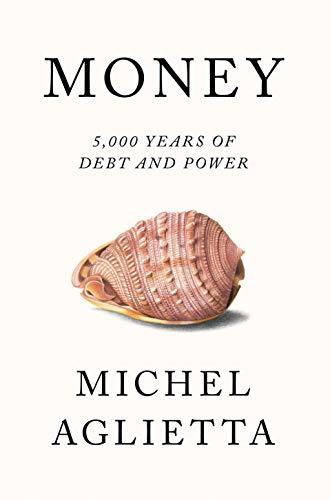
Money: 5,000 Years of Debt and Power
by
Michel Aglietta
Published 23 Oct 2018
See also absolute liquidity livre tournois, 109, 110, 112t, 113, 115, 198, 206 local complementary currencies, 171–3, 176–7 Locke, John, 124, 125, 128, 129, 150, 167, 204 logic of equivalence, 61, 68, 71, 72 long-term international interdependencies, under gold standard, 300f long-term investment, 179, 182, 298–301, 303 long-term rates, 268, 281, 301–2 longue durée cycles, 6, 83, 114 low-carbon investment, 181–2 Lowndes, William, 124 low-value (retail) payments, 152 Lucas, Robert, 26, 27–8 M Maastricht Treaty, 361, 363, 364 MacKinley tariffs, 305 macroprudential policy, 268–76 Madison, James, 133 maravedí, 109, 198 marginal utility, 21, 53 mark, 227 market as coordinating convention, 21 definition, 31 equilibrium of, 15 as self-organising entity, 21, 23, 25, 26 slavery as foundation of, 71 as substitute for social bonds, 12 market bankers, structural enrichment of, 121b market coordination, 8, 16, 19, 25, 31, 34 market economics, theory of, 14, 17 market efficiency, 247, 349 market exchanges, 38, 188 market period, 12–13, 44, 47, 48 market recognition, 38 market societies, 35, 38 Markowitz, Harry, 24, 25, 26 Marshall Plan, 318–19 Marx, Karl, 37n22, 45n26, 68, 71, 135 Mauss, Marcel, 66, 67 Méline tariffs, 305 Menger, Carl, 57 mercantilism, 128 merchant banks, 117–19, 120, 123, 198–9, 200 metal monies, 04, 43t, 47, 77b, 87, 90, 92, 98, 104, 105, 108–9, 110, 115, 116t, 119, 122, 134, 135, 136, 139, 150, 191–5, 198, 202 methodical (routine) confidence, 58, 69–70, 75, 78b, 185, 186, 187, 188t Mexican crisis (1994–95), 237, 238, 242, 243 Microsoft, 156 Middle Ages, monetary inventions of, 104–25 mimetic convergence, theorem of, 38–9 mimetic model, 35–9 minting, 79–80b, 89–93, 105, 106, 217 Mises, Ludwig von, 55 Mitterrand, François, 364 monetary abstraction, 56, 110, 148 monetary base, 236, 247, 256, 259–60, 322 monetary constraint, 44, 47, 54, 61, 139 monetary convention, 37, 38 monetary creation/money creation, 41, 42–4, 44t, 47, 57, 79b, 82, 83, 136, 206, 306, 321, 324, 394 monetary crises. See also financial crises as crises of confidence? 185–8 definition, 221 in dualist systems, 195–200 of first century BC, 102 German hyperinflation. See German hyperinflation in history, 7–8, 49, 191–243 history as traversed by, 185 importance of, 83 under influence of chrematism, 96 in metal-based systems of antiquity, 191–5 and monetary reform in England, 201–5 topology of, 188–90 monetary disorder, 93, 123, 125, 312 monetary doctrines, 7, 55, 62, 124, 125, 160, 161t, 162, 245, 246, 256–9, 365, 389 monetary economics, 28, 46 monetary expansion, 223, 225b, 226, 227, 318, 320–3 monetary innovations, 77b, 108, 109, 147, 156, 173, 183, 190, 201, 209, 325 monetary mutations, 109, 112, 113, 114t, 115, 120, 122, 197 monetary order, 8, 51, 53–4, 55, 56, 57, 58, 61, 69, 72, 73, 78b, 80b, 83, 93, 95, 124, 126, 144, 146, 185, 213, 246, 287, 297, 307n5, 314, 316–18, 329, 365 monetary policies, 7, 84, 90, 91, 102, 113, 145, 151, 153, 157, 160, 161, 162–3, 178, 183, 195, 197, 233–4, 238, 240, 242, 245, 246, 248, 249, 251, 254, 255, 260, 261, 262, 263, 265, 267, 268, 271, 272–3, 274–8, 279, 318, 320, 327, 334, 341, 345, 352, 364, 370, 379, 383, 389, 390 monetary policy doctrines, 256–9 monetary pretenders, 49 monetary reform, 90–1, 94, 96, 98, 100, 104, 124, 185, 190, 193, 195, 200, 201–9, 220, 223, 229, 230, 234, 235 monetary regimes and financial structures, 160t monetary regulation in Argentina, 235 under capitalism, 245–87 in classical era, 249–53 in Europe of postwar ‘golden age’, 159 national monetary regulation of fiduciary money, 253–6 re-establishment of, 229 monetary revolution, 135 monetary rituals, 62 monetary theory of value, 86 money.
…
The results of this search end up polarising around some new shared belief, whose grounding is often external to the former monetary space; often, this means a foreign currency, which becomes the new unit of measurement. Hence, mimicry is the general logic in play in extreme monetary crises, at the critical moment in which the official currency is rejected. We will go on to show how the collective rejection of the national currency climaxed in the German hyperinflation of 1923. We can thus outline a correspondence between the forms of confidence and the rules that constitute money as the system of coordinating market exchanges. Forms of confidence Rules of systems of payments Methodical Circulation of debts, transfer of risks Hierarchical Clearing and settlement Ethical Preservation of the unit of account THE TOPOLOGY OF MONETARY CRISES: CENTRALISATION AND FRAGMENTATION Money is the pivot of a system of debts, in which it is itself the highest debt.
…
From this we deduce the inflation dynamic: Depending on whether β < 1+1/α or β > 1+1/α we find two diferent inflationary regimes: one is directed by monetary expansion, and the other is self-referential. Following this same theoretical schema, let us now discuss some of the famous episodes of hyperinflation: Germany in 1922–23, China in 1947–48 and the Latin American hyperinflation of the 1980s. The German Hyperinflation of 1922–23 After World War One, metal convertibility disappeared more or less quickly in the belligerent countries, depending on the degree of damage they had sustained. The worst-affected country was Germany, which was subjected to the Treaty of Versailles’s absurd tribute payments (‘reparations’).17 Added to the massive destruction resulting from the war and the amputation of both its colonies and part of its own territory, these payments would destroy Wilhelmine society, excite civil war and unleash hyperinflation.18 As we indicated in our theoretical discussion above, German hyperinflation developed through two phases.
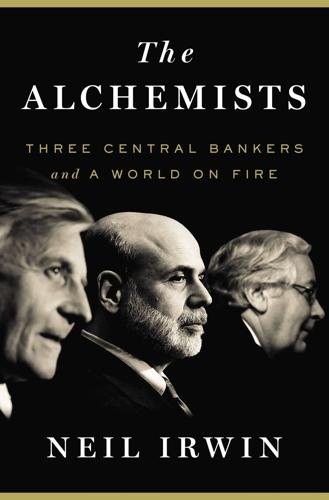
The Alchemists: Three Central Bankers and a World on Fire
by
Neil Irwin
Published 4 Apr 2013
See Draghi, Mario; Trichet, Jean-Claude effectiveness of, 286–87, 295, 317 errors and fiscal crisis, 135–37, 212–13, 303–5 Geithner on bolder moves, 219, 226, 324 and Greek debt restructuring, 312–16 to Greek financial crisis, 209–13, 215–19 interest rate cuts (2011), 344, 353 interest rate hike (2008), 137, 160 interest rate hike (2011), 303–4 internal devaluation, 302–3 Ireland bailout, 283–84, 292–94 lack of coordination problem, 158–61 oversight of foreign banks, 216, 283–86, 294–96 tight money approach, 208–9 wall of money approach (2011), 350–53 European Commission, 75 European Economic Community, 74–75 European financial crises British pound devaluation (1992), 72–73 German hyperinflation (1914–1918), 47–53 German hyperinflation, pre–Nazi era, 50–53, 60 Panic of 1866 (England), 26–28, 31–34 Stockholms Banco rise and fall, 17–24 of 2007–2012. See European financial crisis (2007–2012); Eurozone countries; individual countries European financial crisis (2007–2012). See also individual countries beginning of, 1–8, 111–12 BNP Paribas collapse, 1–4, 111 British crisis, 236–46, 251–52, 332–36 Federal Reserve interventions, 131–32, 153–55, 226–27, 229, 349–50 global interventions, 128–32, 161–63, 349–50 Greece crisis, 201–23, 285–91, 306–16 Iceland crisis, 284 Ireland crisis, 158–59, 283–84, 292–95 Italy crisis, 316–17, 316–23 mortgage-backed securities exposure, 129, 145, 159 Northern Rock PLC crisis, 125–28 Portugal crisis, 296–98 remedies.
…
See Mortgage-backed securities risk related to, 102 Hoover, Herbert, 58 House Committee on Financial Services, 169–71 Household debt, increase in (2005), 100–101 Housing prices central bankers fears (2005), 104–8 end of boom, signs of, 106 housing price increase (2005), 99–100, 103–4 Japan, price run-up (1990s), 85–86 Hubbard, Glenn, 117 Hu Jintao, 347, 363 Hurley, John, 158 Hutchinson, Kay Bailey, 196, 198–99 Hyun Song Shin, 107–8, 129 Iceland financial crisis, 284 Ichimada, Hisato, 86 Independent Community Bankers of America, 178–79, 196 Inflation European countries, varying rates of, 75 German hyperinflation (1914–1918), 47–53 German hyperinflation, pre–Nazi era, 11, 50–53 Great Britain (2010–2011), 245, 251–52, 334 Greece (2000s), 203–4 low, negative effects, 260, 270 low U.S. levels (2010), 260 price increases, self-perpetuation of, 65–66, 134–35 Stockholms Banco creation of, 22–23 United States 1970’s.
…
Workers rushed to spend their paychecks the moment they received them. Bankers became accustomed to doing business in trillion-mark notes; one clerk wrote that inscribing all those zeros “made work much slower and I lost any feeling of relationship to the money I was handling so much of. It had no reality at all, it was just paper.” German hyperinflation wiped out the savings of an entire generation of what had been an increasingly prosperous merchant class. A waiter interviewed by Ernest Hemingway said that a year earlier he had saved up enough money to buy a tavern; by that time, in 1923, “that money wouldn’t buy four bottles of champagne.”

23 Things They Don't Tell You About Capitalism
by
Ha-Joon Chang
Published 1 Jan 2010
German inflation got completely out of control after the occupation of the Ruhr, with prices rising by another 10 billion times (yes, billion, not thousand or even million) until November 1923, when Rentenmark, the new currency, was introduced. The German hyperinflation has left big and long-lasting marks on the evolution of German, and world, history. Some claim, with justification, that the experience of hyperinflation laid the grounds for the rise of the Nazis by discrediting the liberal institutions of the Weimar Republic. Those who take this view are then implicitly saying that the 1920s German hyperinflation was one of the main causes of the Second World War. The German trauma from the hyperinflation was such that the Bundesbank, the West German central bank after the Second World War, was famous for its excessive aversion to loose monetary policy.
…
Even after the birth of the European single currency, the euro, and the consequent de facto abolition of national central banks in the Eurozone countries, Germany’s influence has made the European Central Bank (ECB) stick to tight monetary policy even in the face of persistently high unemployment, until the 2008 world financial crisis forced it to join other central banks around the world in an unprecedented relaxation of monetary policy. Thus, when talking about the consequences of the German hyperinflation, we are talking about a shockwave lasting nearly a century after the event and affecting not just German, but other European, and world, histories. How bad is inflation? Germany is not the only country that has experienced hyperinflation. In the financial press Argentina has become a byword for hyperinflation in modern times, but the highest rate of inflation it experienced was only around 20,000 per cent.
…
Worse than the German one was the Hungarian inflation right after the Second World War and that in Zimbabwe in 2008 in the last days of President Robert Mugabe’s dictatorship (now he shares power with the former opposition). Hyperinflation undermines the very basis of capitalism, by turning market prices into meaningless noises. At the height of the Hungarian inflation in 1946, prices doubled every fifteen hours, while prices doubled every four days in the worst days of the German hyperinflation of 1923. Price signals should not be absolute guides, as I argue throughout this book, but it is impossible to have a decent economy when prices rise at such rates. Moreover, hyperinflation is often the result or the cause of political disasters, such as Adolf Hitler or Robert Mugabe. It is totally understandable why people desperately want to avoid hyperinflation.
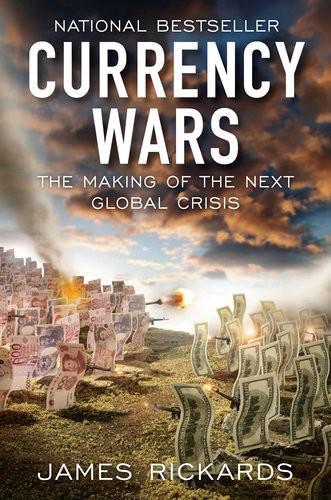
Currency Wars: The Making of the Next Gobal Crisis
by
James Rickards
Published 10 Nov 2011
The volatile and self-defeating nature of the international monetary system during that period makes Currency War I the ultimate cautionary tale for today as the world again confronts the challenge of massive unpayable debt. Currency War I began in 1921 in Weimar Germany when the Reichsbank, Germany’s central bank, set about to destroy the value of the German mark through massive money printing and hyperinflation. Presided over by Reichsbank head Dr. Rudolf von Havenstein, a Prussian lawyer-turned-banker, the inflation proceeded primarily through the Reichsbank’s purchases of bills from the German government to supply the government with the money needed to fund budget deficits and government spending.
…
The Weimar hyperinflation actually achieved a number of important political goals, a fact that had repercussions throughout the 1920s and 1930s. Hyperinflation unified the German people in opposition to “foreign speculators” and it forced France to show its hand in the Ruhr Valley, thus creating a case for German rearmament. Hyperinflation also evoked some sympathy from England and the United States for alleviation of the harshest demands for reparations emanating from the Versailles Treaty. While the collapse of the mark was not directly linked to the value of reparations payments, Germany could at least argue that its economy had collapsed because of hyperinflation, justifying some form of reparations relief.
…
Finally, the hyperinflation showed that countries could, in effect, play with fire when it came to paper currencies, knowing that a simple resort to the gold standard or some other tangible asset such as land could restore order when conditions seemed opportune—exactly what Germany did. This is not to argue that German hyperinflation in 1922 was a carefully thought-out plan, only that hyperinflation can be used as a policy lever. Hyperinflation produces fairly predictable sets of winners and losers and prompts certain behaviors and therefore can be used politically to rearrange social and economic relations among debtors, creditors, labor and capital, while gold is kept available to clean up the wreckage if necessary.
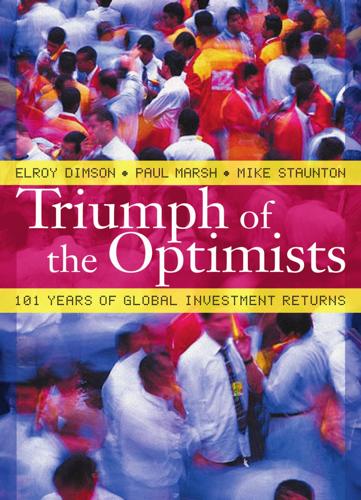
Triumph of the Optimists: 101 Years of Global Investment Returns
by
Elroy Dimson
,
Paul Marsh
and
Mike Staunton
Published 3 Feb 2002
There were further staggering rises in inflation until end-1923, when the German government ceased printing money. In 1923, the inflation rate was 209 billion percent. If we were to include 1922 and particularly 1923 in our calculations, the German arithmetic mean annual inflation rate over the 101 years from 1900–2000 would exceed two billion percent. The German hyperinflation had devastating consequences, wiping out all internal debts almost overnight, and ruining a substantial proportion of Germany’s middle class. Savings, bank balances, mortgages, annuities, pensions, bills, bonds, and other paper investments all became worthless. This episode remains as a dreadful warning that government bonds and even bills can, under extreme circumstances, experience a real return of -100 percent.
…
Chapter 5 Inflation, interest rates and bill returns 67 Figure 5-3: International inflation: first half of twentieth century versus subsequent fifty-one years Inflation rate (percent per year) 12 Before 1950 10.5 1950–2000 10 8.0 8 7.9 4 4.0 2 1.5 1.7 1.9 2.0 2.0 5.4 4.1 2.1 4.4 4.0 2.9 2.3 6.7 6.3 5.9 5.5 6 11.6 7.7 7.4 6.1 11.4 2.4 2.6 4.6 5.4 5.2 4.0 3.7 2.8 2.8 0 Swi SAf Swe UK Neth Can Aus US Ire Den Spa AVG Bel Ger Fra Jap Ita Between 1919 and 1925, four other countries outside our sample, Austria, Hungary, Poland, and Russia, also experienced hyperinflation, although not quite on the German scale. The second Hungarian hyperinflation of 1945–46, however, dwarfed even Germany’s, with a compound rate of 19,800 percent per month. In more recent memory, there have been very high rates of inflation in several South American and African countries, Israel, and various former members of the Soviet Union. Within our sample, the maximum inflation rate column in Table 5-1 shows that, although only Germany experienced true hyperinflation, very high inflation rates occurred in several other countries.
…
The four countries already identified as having the worst inflationary experiences, France, Germany, Italy, and Japan, all experienced negative real returns from bill investments. From the table, it appears as though Italy experienced the lowest real return of -4.1 percent per year, but the German experience was worse. All investors in shortdated German debt experienced a total loss of -100 percent in the hyperinflation of 1922–23, and we have excluded these years from the means and standard deviations in Table 5-2. The minimum value column in Table 5-2 shows the lowest real interest rate experienced in each country, that is, the worst year in real terms for bill investment. While the German experience of 1923 heads the list, Italy experienced a real rate of -77 percent in 1944, and Japan had a real rate of -75 percent in 1946, while French bill investors lost 42 percent in real terms, also in 1946.
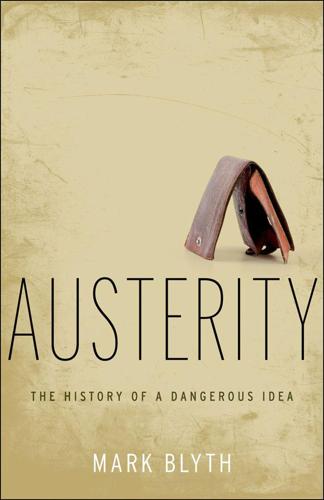
Austerity: The History of a Dangerous Idea
by
Mark Blyth
Published 24 Apr 2013
Their common origins lay instead in the fact that World War I had been financed through debt rather than through taxes, which lowered postwar exchange rates and made imports more expensive, which in turn fostered inflation. The inflation pent-up from that earlier period ebbed and flowed for almost a decade. Second, though the German hyperinflation was caused by government policy, it was intimately bound up with the desire of the German government to break the economic stranglehold of the war reparations that it owed to France under the Treaty of Versailles. France wanted Germany to pay off its war reparation in either gold-backed marks or foreign currencies.
…
As Fred Block put it with justified irony, “The American contribution to … the problem was to lend Germany huge sums of capital, which were then used to finance reparations payments.”13 If you think this sounds a little like continually giving the European periphery loans that those countries can never hope to pay back because of their already high debt burdens, again, you would not be completely wrong. The whole system stayed afloat, after the German hyperinflation of 1923, for about four years, until United States capital exports slowed down as a result of the Wall Street boom of 1928 and the subsequent crash of 1929.14 Alarmed by the booming stock market, the US Federal Reserve raised interest rates in 1928 to cool domestic demand. This had the effect of reversing the flow of capital to Europe as US capital came home to take advantage of these higher interest rates, which unexpectedly further stoked the stock market boom.15 After all, why put your money in Germany when you can make 15 percent buying shares in an investment trust and 7 percent in a bank deposit in the USA?
…
Defending the Franc—But Not France: French Austerity Policies 1919–1939 Despite being on the victorious side in the First World War, France, among all the Allied powers, suffered the most wartime destruction of persons, property, and wealth. So much so that getting the Germans to pay for all the damage constituted a significant part of forward budgetary planning. That the Germans did not want to pay and, after the hyperinflation, basically didn’t pay, was to prove a significant problem for the French economy going forward. The boom-slump-stabilization pattern that characterized the world economy in the early 1920s hit France in a peculiar way. By relying on German reparations to supply a large portion of their budget, when payments were not forthcoming, the resulting budget deficits had to be met with higher interest rates to attract capital.
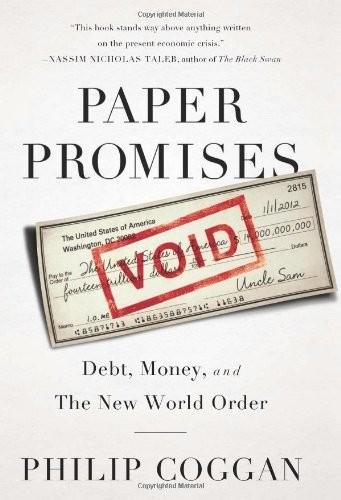
Paper Promises
by
Philip Coggan
Published 1 Dec 2011
One reason why Bryan lost the 1896 election was that his campaign had little appeal to industrial workers for whom higher food prices meant a lower standard of living; outside the South (then a Democratic stronghold) Bryan carried only one city with more than 100,000 inhabitants. Inflation penalizes the thrifty. In the chaos that followed the end of the First World War, German hyperinflation, designed to erode the burden of the reparations imposed by the Treaty of Versailles, destroyed the savings of the middle class and paved the way for the rise of Hitler. Even bankers become less concerned with the idea of sound money when their own survival is at stake. They are quick to call for governments and central banks to cut interest rates and to create as much new money as is needed to stabilize the financial system.
…
Schacht’s plan, which had echoes of the French revolutionary issue of assignats, declared that the new currency was backed by the value of German land. This was a wholly illusory promise, but in the short term, it didn’t matter; the Rentenmark was an acceptable means of exchange. In its own way, though, it set a precedent. Paper money did not have to be backed by gold for citizens to believe in it. In the short term, however, German hyperinflation only increased the belief that politicians were not to be trusted with paper money, any more than an alcoholic should be left in charge of the drinks cabinet. It was time to return to the eternal verities of the gold standard, to reassert the rights of creditors. If the gold standard was to be restored, the key country was Britain.
…
All the adjustment was forced on to the deficit countries, a process that will seem familiar to modern-day residents of Greece and Ireland. In 1924, a deal had been made on reparations, a running sore throughout the early 1920s. Under US leadership, German reparations payments had been lowered and extended. As the German economy stabilized after hyperinflation, US banks became willing to lend to Germany. In effect, money was being recycled round the system; US banks lent to Germany, which allowed the Germans to pay the reparations bill, allowing Britain and France to meet their US war debts. But from 1928 onwards, this lending slowed and then ceased.
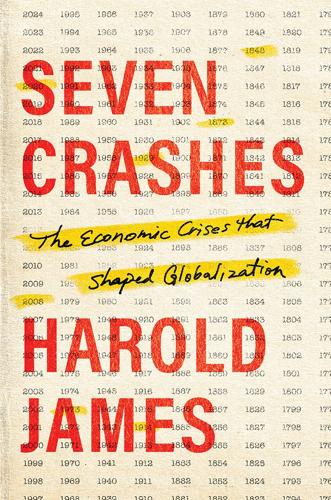
Seven Crashes: The Economic Crises That Shaped Globalization
by
Harold James
Published 15 Jan 2023
In the First World War, he became Secretary of the Treasury (that is, finance minister), and planned a system of war financing that he believed followed from his monetary theory. He would avoid costs to Germans by—as he put it in a memorable phrase—hanging the lead weight of the billions around the necks of the defeated powers. After the lost war, he misunderstood completely the character of the gathering German inflation and hyperinflation, engaged in savage polemics against the leading politicians of the early Weimar Republic, and contributed a stabilization plan that aimed at ending inflation. He never understood the extent to which the First World War was a supply shock. His name is synonymous with what is now called “fiscal dominance.”
…
The next swing of the globalization pendulum would shift the focus, from interpreting the international mechanisms of trade and financial flows as distributing price signals to millions of individuals, to thinking about them as offering a way collectively to redistribute resources. 3 The Great War and the Great Inflation The First World War is a turning point in the story of modern globalization. It also produced the most devastating demonstration of the destructive effects of inflation: the German hyperinflation. That experience remained, along with the Great Depression, as the great bogey of economic history and analysis. The memory of both continues to haunt policy-makers, and they are both part of a general discourse even for generations and countries that have no direct experience or memory of those policy catastrophes.
…
Some of this land was returned, but most was sold off by the state to small-holders in a bid to establish a prosperous Czech peasantry.53 Inflations could be justified in a way analogous to the wartime calculation: it was a way of imposing costs on someone else. That dynamic was particularly explicit in the German discussion. Germans saw their inflation as a way of wriggling out of the reparations settlement imposed by the Treaty of Versailles. Chancellor Wilhelm Cuno privately confessed in July 1923, as the German hyperinflation reached its terminal extreme phase, that “naturally the wish had been to deal with reparations first and clean up the tax problem afterward.”54 Even the process of inflation involved initially luring gullible foreign investors into buying German paper banknotes in the expectation that there would be a profitable recovery of the exchange rate.
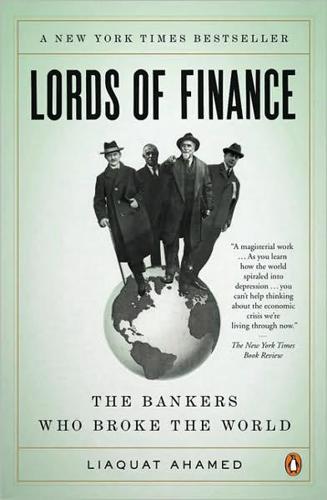
Lords of Finance: The Bankers Who Broke the World
by
Liaquat Ahamed
Published 22 Jan 2009
But instead of trying to rebuild its finances, the German government adopted a policy of systematic inflation, in part to meet reparations, and thus launched itself on that voyage of fantasy into the outer realms of the monetary universe. FIGURE 1 Britain and France lay somewhere in between. During the war, France had expanded its currency by 350 percent, pushing up prices equivalently. After the war, the Banque de France avoided German-style hyperinflation and currency collapse by putting a lid on the issue of new currency. However, France continued to flirt with disaster by running budget deficits of $500 million and was saved once again only by the remarkable thriftiness of its people. While there was a group within the Banque who harbored the fantasy of reversing the more than threefold price increase and returning the franc to gold at its prewar parity, most rational observers agreed that when France returned to the gold standard, it would have to be at a radically lower exchange rate—and even that still seemed many years away.
…
The link with gold was the only sure defense against such a downward spiral in the value of money. His reaction to the Tract was colored by his personal dealings with Keynes. After the war, Norman, agreeing with much of Keynes’s argument on reparations, had consulted him at the height of the German hyperinflation. But Keynes’s vocal opposition to the war-debt settlement with the United States, which Norman had been responsible for engineering, created a rift. Norman, acutely sensitive to public criticism, harbored grudges for a long time—“the most vindictive man I have ever known,” according to one close friend.
…
As the committee began its deliberations, it found itself facing two tasks. The first was to persuade the French to accede to a lower payment schedule, at least temporarily, to which they would only agree if stringent foreign controls were imposed on the management of German finances. The French saw German hyperinflation as part of a deliberate campaign by its officials to wreck their own economy and thus prevent reparations from being paid. Some mechanism for preventing any future sabotage of Germany’s finances had to be put in place. The second task was therefore to persuade the Germans to accept such an imposition.
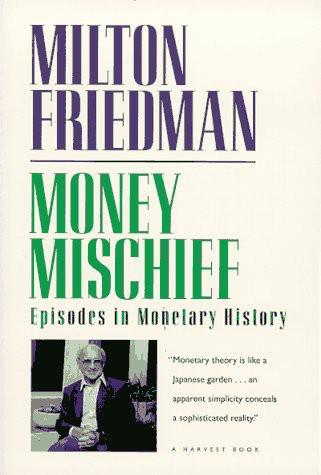
Money Mischief: Episodes in Monetary History
by
Milton Friedman
Published 1 Jan 1992
Since there was small prospect that a czar would return to redeem the promise printed on the czarist rubles, it is remarkable that they were still being accepted as substitute currency and had retained their purchasing power. They retained their value precisely because no new czarist rubles could be created, and hence the quantity available to circulate was fixed. During the German hyperinflation after World War I, currencies of foreign countries served as a substitute currency. After World War II, the Allied occupational authorities exercised sufficiently rigid control over monetary matters, in the course of trying to enforce price and wage controls, that it was difficult to use foreign currency.
…
The quantity of commodity money is subject to similar physical limits, though it has at times grown more rapidly than output in general, as the examples of the flood of precious metals from the New World in the sixteenth and seventeenth centuries and of gold in the nineteenth century illustrate. The modern forms of money—paper and bookkeeping entries—are subject to no such physical limits. During the German hyperinflation after World War I, hand-to-hand money increased at the average rate of more than 300 percent a month for more than a year, and so did prices. During the Hungarian hyperinflation after World War II, hand-to-hand money increased at the average rate of more than 12,000 percent a month for a year, and prices at the even higher rate of nearly 20,000 percent a month (see Cagan 1956, p. 26).

The Ascent of Money: A Financial History of the World
by
Niall Ferguson
Published 13 Nov 2007
It was true, as far as it went, that the downward slide of the mark boosted German exports. What the Germans overlooked was that the inflation-induced boom of 1920-22, at a time when the US and UK economies were in the depths of a post-war recession, caused an even bigger surge in imports, thus negating the economic pressure they had hoped to exert. At the heart of the German hyperinflation was a miscalculation. When the French cottoned on to the insincerity of official German pledges to fulfil their reparations commitments, they drew the conclusion that reparations would have to be collected by force and invaded the industrial Ruhr region. The Germans reacted by proclaiming a general strike (‘passive resistance’), which they financed with yet more paper money.
…
‘[It is] a witches’ sabbath of devaluation where men and the units of their money have the strongest effects on each other. The one stands for the other, men feeling themselves as “bad” as their money; and this becomes worse and worse. Together they are all at its mercy and all feel equally worthless.’60 The price of hyperinflation: a German billion mark note from November 1923 Worthlessness was the hyperinflation’s principal product. Not only was money rendered worthless; so too were all the forms of wealth and income fixed in terms of that money. That included bonds. The hyperinflation could not wipe out Germany’s external debt, which had been fixed in pre-war currency.
…
Only entrepreneurs were in a position to insulate themselves by adjusting prices upwards, hoarding dollars, investing in ‘real assets’ (such as houses or factories) and paying off debts in depreciating banknotes. The enduring economic legacy of the hyperinflation was bad enough: weakened banks and chronically high interest rates, which now incorporated a substantial inflation risk premium. But it was the social and political consequences of the German hyperinflation that were the most grievous. The English economist John Maynard Keynes had theorized in 1923 that the ‘euthanasia of the rentier’ through inflation was preferable to mass unemployment through deflation - ‘because it is worse in an impoverished world to provoke unemployment than to disappoint the rentier’.61 Yet four years earlier, he himself had given a vivid account of the negative consequences of inflation: By a continuing process of inflation, governments can confiscate, secretly and unobserved, an important part of the wealth of their citizens.
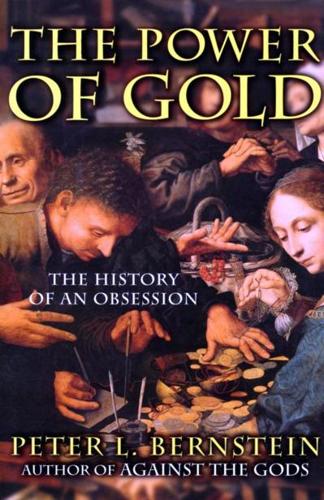
The Power of Gold: The History of an Obsession
by
Peter L. Bernstein
Published 1 Jan 2000
The planes continued to be crammed with excessive amounts of low-denomination notes occupying cargo space desperately needed for food, oil, weapons, and ammunition. Similar myopia in adjusting denominations to price increases explains the stories about people running around with wheelbarrows full of currency in the German hyperinflation of the 1920s. About one thousand years after Qin, during the reign of Hien Tsung (806-821), a severe shortage of copper induced the emperor to use sheets of paper for money in place of bronze coins. If there was no point in making payments with useful stuff, the emperor reasoned, why not go all the way and adopt paper?
…
Norman, who had spent one period of his youth in Germany, was always partial to Germans and antagonistic toward the French; his warm friendship with the Reichsbank president, Hjalmar Horace Greeley Schacht, only added to the friction between him and Moreau. Schacht was a powerful and brilliant financier who had been primarily responsible for ending the wild German hyperinflation of the early 1920s. In the later 1930s, he was both President of the Reichsbank and Minister of Economics under Hitler, but rivalry with Hermann Goering led to his dismissal in 1939. He was imprisoned after the assassination attempt on Hitler on July 20, 1944, and also faced the war crimes tribunal in Nurnberg after World War 11-where he was acquitted.

And Finally
by
Henry Marsh
I look at it every day. They are looking directly at the camera, so that their questioning eyes, in black and white, follow you around the room. My mother and her sister Sabine are wearing simple white blouses, their young brother Hans Marquadt is wearing a sailor suit. This was six years after the German hyperinflation in which her parents had lost most of their modest wealth. The Great Depression had started, and the Nazis were on the rise. They could not have had any idea what the future held for them. Sabine was to become an enthusiastic Nazi, my uncle a Luftwaffe fighter pilot in the crack Schlageter 26 Squadron, and my mother a dissident, who fled to England in 1939, having been denounced to the Gestapo.
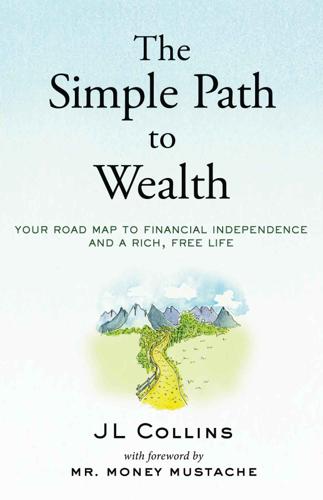
The Simple Path to Wealth: Your Road Map to Financial Independence and a Rich, Free Life
by
J L Collins
Published 17 Jun 2016
Here in the U.S., we haven’t had to deal with this monster since the Revolutionary War way back in 1776. But it destroyed Zimbabwe’s economy as recently as 2008. Hungary had the worst case of it in history when in July 1946, the peak inflation rate reached 41.9 quadrillion percent, and many credit the German hyperinflation of the 1920s with ushering the Nazis to power in the 1930s. Hyperinflation is very bad news—every bit as destructive as deflation—and it is exactly what it sounds like: Inflation running out of control. A little inflation can be a very healthy thing for an economy. It allows for prices and wages to expand.
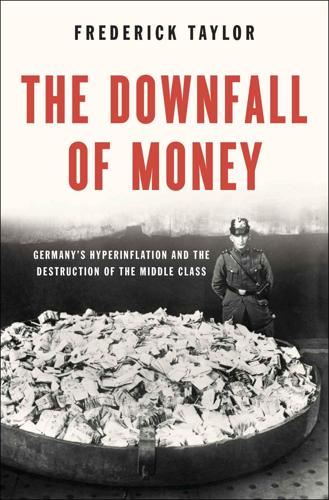
The Downfall of Money: Germany's Hyperinflation and the Destruction of the Middle Class
by
Frederick Taylor
Published 16 Sep 2013
10 Consequences 11 Putsch 12 The Rally 13 Goldilocks and the Mark 14 Boom 15 No More Heroes 16 Fear 17 Losers 18 Kicking Germany When She’s Down 19 Führer 20 ‘It Is Too Much’ 21 The Starving Billionaires 22 Desperate Measures 23 Everyone Wants a Dictator 24 Breaking the Fever 25 Bail-out Afterword Appendix Acknowledgements Image Section Bibliography Notes A Note on the Author By the Same Author Also by Frederick Taylor Introduction This book seeks to provide a narrative description of the origins, progression and effects of the German hyperinflation and to place this extraordinary phenomenon in the turbulent, ominous human context of the world in which it occurred. It is not by any means a book about economics in the narrow sense. The ills of the German currency between 1914 and 1924 arose out of, and then fed back into, the ills of the country itself.
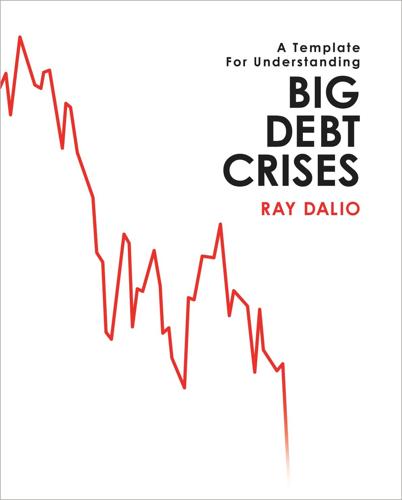
Big Debt Crises
by
Ray Dalio
Published 9 Sep 2018
The biggest bumps came more as a result of wars than the worst depressions (though a case can be made that those wars were caused by the political fallout from those depressions). PART 2: Detailed Case Studies German Debt Crisis and Hyperinflation (1918–1924) US Debt Crisis and Adjustment (1918–1924) US Debt Crisis and Adjustment (2007–2011) German Debt Crisis and Hyperinflation (1918-1924) * * * This section provides a detailed account of the most iconic inflationary depression cycle in history—the German debt crisis and hyperinflation that followed the end of World War I and carried into the mid-1920s, which set the stage for the economic and political changes of the 1930s.
…
A Template for Understanding BIG DEBT CRISES Ray Dalio Table of Contents A Template for Understanding Big Debt Crises Acknowledgements Introduction PART 1: The Archetypal Big Debt Cycle How I Think about Credit and Debt The Template for the Archetypal Long-Term/Big Debt Cycle Our Examination of the Cycle The Phases of the Classic Deflationary Debt Cycle The Early Part of the Cycle The Bubble The Top The “Depression” The “Beautiful Deleveraging” “Pushing on a String” Normalization Inflationary Depressions and Currency Crises The Phases of the Classic Inflationary Debt Cycle The Early Part of the Cycle The Bubble The Top and Currency Defense The Depression (Often When the Currency Is Let Go) Normalization The Spiral from a More Transitory Inflationary Depression to Hyperinflation War Economies In Summary PART 2: Detailed Case Studies German Debt Crisis and Hyperinflation (1918-1924) US Debt Crisis and Adjustment (1928–1937) US Debt Crisis and Adjustment (2007–2011) PART 3: Compendium of 48 Case Studies Glossary of Key Economic Terms Primarily Domestic Currency Debt Crises Non-Domestic Currency Debt Crises Appendix: Macroprudential Policies Acknowledgements I cannot adequately thank the many people at Bridgewater who have shared, and continue to share, my mission to understand the markets and to test that understanding in the real world.
…
PART 2: Detailed Case Studies German Debt Crisis and Hyperinflation (1918–1924) US Debt Crisis and Adjustment (1918–1924) US Debt Crisis and Adjustment (2007–2011) German Debt Crisis and Hyperinflation (1918-1924) * * * This section provides a detailed account of the most iconic inflationary depression cycle in history—the German debt crisis and hyperinflation that followed the end of World War I and carried into the mid-1920s, which set the stage for the economic and political changes of the 1930s. Much like my accounts of the 2008 US Financial Crisis and the 1930s Great Depression, this study goes through the particulars of the case in some detail with reference to the template laid out earlier in the “Archetypal Inflationary Depression.” Although the German hyperinflation took place almost a century ago, and amid exceptional political circumstances (Germany’s defeat in the First World War and the imposition of a huge reparation burden on it by the Allies), the basic dynamic of debt cycles, economic activity, and markets described in the template drove what happened. Noting the differences between this inflationary depression case (and other inflationary depression cases) and the deflationary depression cases highlights what makes some inflationary and others deflationary.
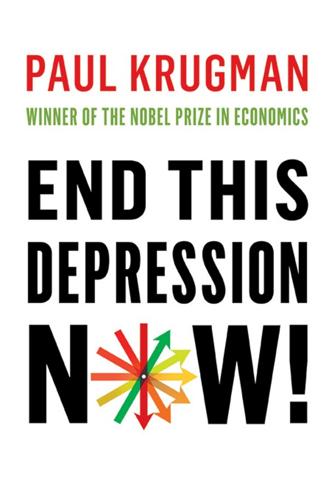
End This Depression Now!
by
Paul Krugman
Published 30 Apr 2012
The Politics of Despair The ultimate costs of the Great Depression went far beyond economic losses, or even the suffering associated with mass unemployment. The Depression had catastrophic political effects as well. In particular, while modern conventional wisdom links the rise of Hitler to the German hyperinflation of 1923, what actually brought him to power was the German depression of the early 1930s, a depression that was even more severe than that in the rest of Europe, thanks to the deflationary policies of Chancellor Heinrich Brüning. Can anything like that happen today? There’s a well-established and justified stigma attached to invoking Nazi parallels (look up “Godwin’s law”), and it’s hard to see anything quite that bad happening in the twenty-first century.

The Simple Path to Wealth (Revised & Expanded 2025 Edition): Your Road Map to Financial Independence and a Rich, Free Life
by
JL Collins
Here in the US, we haven’t had to deal with this monster since the Revolutionary War way back in 1776. But it destroyed Zimbabwe’s economy as recently as 2008. Hungary had the worst case of it in history when in July 1946, the peak inflation rate reached 41.9 quadrillion percent, and many credit the German hyperinflation of the 1920s with ushering the Nazis to power in the 1930s. Hyperinflation is very bad news—every bit as destructive as deflation—and it is exactly what it sounds like: inflation running out of control. A little inflation can be a very healthy thing for an economy. It allows for prices and wages to expand.
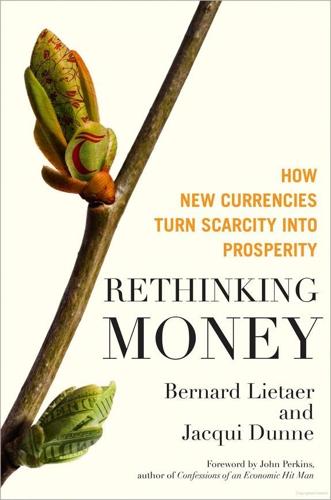
Rethinking Money: How New Currencies Turn Scarcity Into Prosperity
by
Bernard Lietaer
and
Jacqui Dunne
Published 4 Feb 2013
To appreciate the full panorama of what happened in German-speaking Europe in the years between the two world wars, besides the earlier example of the WIR, a look at Wörgl and the Wära provide some important insights. Mostly forgotten today is that the large number of cooperative currencies arose in the aftermath of the German hyperinflation of the 1920s, when the Reichsmark, the German currency at the time, became worthless. Similarly, there was an explosion of local currencies in both Western Europe and North America following the economic crash of 1929 and, more recently, in Argentina, following the collapse of its national currency in 2001.
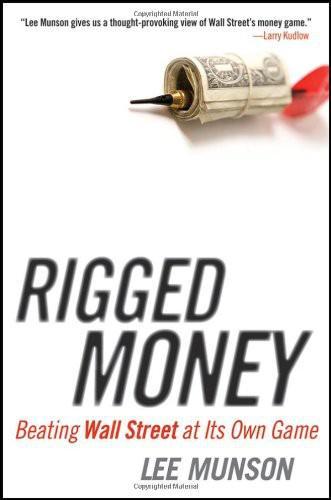
Rigged Money: Beating Wall Street at Its Own Game
by
Lee Munson
Published 6 Dec 2011
It’s true; gold bugs are having their day in the sun with the massive run up in prices since 1999. But they fail to mention the longer-term track record of the metal or the overall purpose for holding the stuff. I find it unclear what their reasoning is outside of the endless chatter of fumbling central banks and parallels to pre-World War II German hyperinflation. Okay, I do get it. Some people want to see the world burn and have the only form of money that has lasted throughout the ages, mainly because you can’t destroy basic elements. Nobody wants to be sitting in line at the corner store with a wheelbarrow of cash when a simple sliver of gold could pay for a loaf of bread.
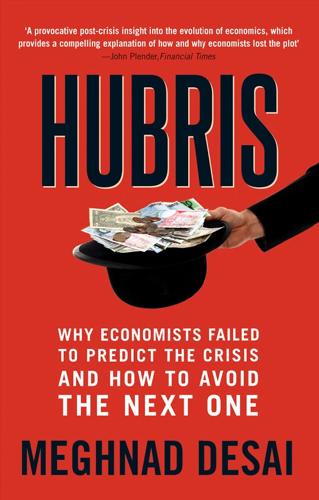
Hubris: Why Economists Failed to Predict the Crisis and How to Avoid the Next One
by
Meghnad Desai
Published 15 Feb 2015
Adaptive expectations are predicated on the idea that our expectations of what will happen tomorrow are based on an average of today’s events and those of the recent past. If inflation has been creeping up, we would expect it to go on rising further. We would then bring our purchases forward to avert the higher prices; but that would make prices more likely to rise further. During the German hyperinflation, this adaptive behavior occurred during the course of the day so that by the afternoon prices were higher than they had been in the morning. Monetarism undermined the twin pillars of Official Keynesianism. Budget deficits were no longer benign and inflation rather than underemployment was the principal problem market economies had to tackle.
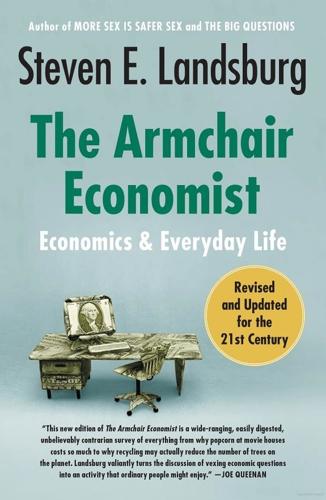
The Armchair Economist: Economics and Everyday Life
by
Steven E. Landsburg
Published 1 May 2012
In times of very high inflation, the deadweight losses can become enormous. In the Hungarian hyperinflation of 1948, workers were paid three times a day and their spouses were 68 GOOD AND EVIL employed full-time running back and forth between the workplace and the bank, trying to deposit paychecks before they became worthless. During the German hyperinflation that followed World War I, John Maynard Keynes reported that tavern-goers frequently ordered several beers early in the evening— before the price went up. Drinking warm beer can be a hidden cost of inflation. Hollywood screenwriters and denizens of the college lecture circuit periodically rediscover the dramatic potential of a burning dollar bill.
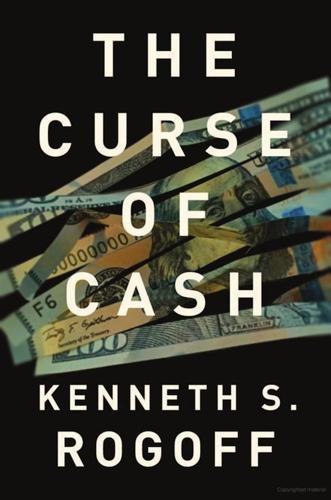
The Curse of Cash
by
Kenneth S Rogoff
Published 29 Aug 2016
This suspicion is echoed in Johann Wolfgang von Goethe’s Faust, when the demon Mephistopheles tempts the emperor, who is in severe financial distress, to introduce paper money to increase spending and pay off state debt. The device works in the short run but ultimately leads to inflation and ruin. Goethe, writing early in the nineteenth century, was nothing if not prescient. Without paper money, there might have been no German hyperinflation, and perhaps no World War II.1 Failed paper money may be cursed, but successful paper money has long been a cornerstone of the world’s most successful economies. A century and a half before the founding of the Federal Reserve in 1913, American Benjamin Franklin arrived in London, planning to suggest that the British allow the American colonies to create a universal paper money to help pay their share of costs from the Seven Years’ War; the idea did not materialize.2 Ironically, the very American currency Franklin envisioned 250 years ago has now not only come into existence, it has also far surpassed its British counterpart in global import and now constitutes what is perhaps the greatest symbol of American power.
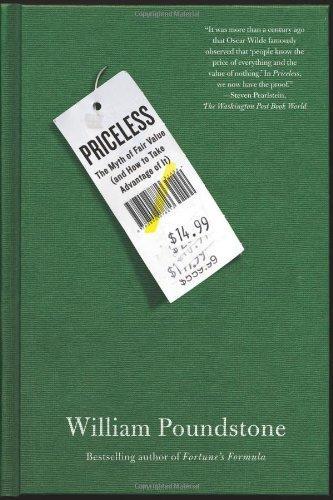
Priceless: The Myth of Fair Value (And How to Take Advantage of It)
by
William Poundstone
Published 1 Jan 2010
When prices are stable, we can act as if money and purchasing power are one and the same. When the purchasing power of money varies, it’s necessary to draw a distinction. This is how economists think, at any rate. Regular folks, like the shopkeeper, tend to ignore inflation. The peak year of German hyperinflation was 1923, when prices were doubling every two days. A news photo showed a German woman shoveling marks into her furnace. By then, a pile of burning cash generated more heat than the shrinking pile of firewood it could buy. Fisher nonetheless found that Germans managed to live in partial denial.
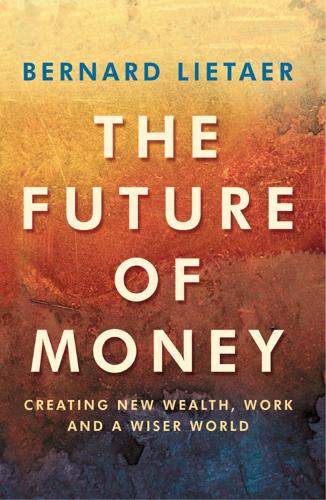
The Future of Money
by
Bernard Lietaer
Published 28 Apr 2013
You will also see that these experiments were stopped by governments, not because they were not working, but because they were working too well without the need for central government involvement. The path not taken in the 1930’s If your family lived in the 1930s in Western Europe, the US, Canada or Northern Mexico (i.e. the area where the Great Depression hit hardest), you may have heard about the path not taken. In the aftermath of the German hyperinflation period of the 1920s, or of the Crash of 1929 in the other countries, literally thousands of communities started their own currency systems. Your village or town probably used one. The interesting solutions, which were implemented at that time, include a now almost forgotten movement of 'emergency currencies'.
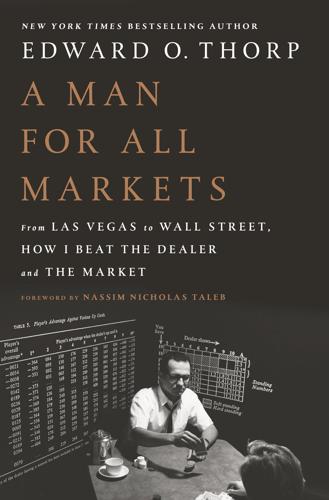
A Man for All Markets
by
Edward O. Thorp
Published 15 Nov 2016
after the 1929 crash and stays at a reduced level for the next decade. Then it increases rapidly during World War II and the first postwar years. Although inflation has been moderate in the United States and in most first-world countries most of the time, it is occasionally catastrophic. During the German hyperinflation of 1919–23, the currency declined to one hundred billionth of its starting value (divide by 100,000,000,000). Debtors were freed and lenders were ruined. This level of inflation would reduce the $18 trillion or so US national debt of 2015 to the equivalent of $180. In 2009, the African nation of Zimbabwe experienced a hyperinflation comparable to the German one, with Z-one-trillion bills commonplace.
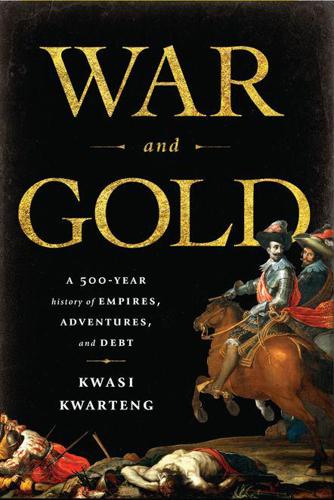
War and Gold: A Five-Hundred-Year History of Empires, Adventures, and Debt
by
Kwasi Kwarteng
Published 12 May 2014
GETTY IMAGES The First World War (1914–18) was an intense, all-encompassing struggle in which goverments resorted to paper money. They borrowed unprecedented amounts to spend on armaments. © BETTMANN/CORBIS Ford was a symbol of American industrial might for much of the twentieth century. Ford’s successes in the 1920s were built on the back of an unsustainable consumer credit bubble. GETTY IMAGES German hyperinflation, stoked by paper money, shocked the world during the early 1920s. It has shaped the German preoccupation with a strong currency. © BETTMANN/CORBIS The Wall Street Crash which followed in 1929 rocked the financial world. Wall Street had emerged as the international financial centre after the First World War; its sudden collpase had an equally global impact.
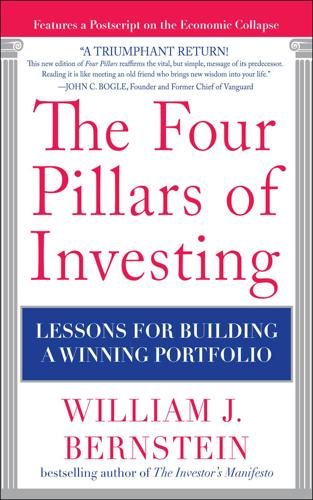
The Four Pillars of Investing: Lessons for Building a Winning Portfolio
by
William J. Bernstein
Published 26 Apr 2002
So no matter how badly inflation rages, the interest payments of these bonds will be 3.45% of the face amount in real purchasing power, and the principal will also be repaid in inflation-adjusted dollars. (These are the equivalent of the gold-backed bonds of the last century.) Third, inflation is a painful, searing experience for the bondholder and is not soon forgotten. During the German hyperinflation of the 1920s, bonds lost 100% of their value within a few months. German investors said, “Never again,” and for the past 80 years, German central banks have carefully controlled inflation by reining in their money supply. American investors, too, were traumatized by the Great Inflation of 1965 to 1985 and began demanding an “inflation premium” when purchasing long-term bonds.

Free to Choose: A Personal Statement
by
Milton Friedman
and
Rose D. Friedman
Published 2 Jan 1980
The quantity of commodity money is subject to similar physical limits, though, as the examples of tobacco, precious metals from the New World, and gold in the nineteenth century illustrate, commodity money has at times grown far more rapidly than output in general. Modern forms of money—paper and bookkeeping entries—are subject to no physical limits. The nominal quantity, that is, the number of dollars, pounds, marks, or other monetary units, can grow at any rate, and at times has grown at fantastic rates. During the German hyperinflation after World War I, for example, hand-to-hand money grew at the average rate of more than 300 percent a month for more than a year, and so did prices. During the Hungarian hyperinflation after World War II, hand-to-hand money rose at the average rate of more than 12,000 percent per month for a year, and prices at the even higher rate of nearly 20,000 percent a month.10 During the far more moderate inflation in the United States from 1969 to 1979, the quantity of money rose at the average rate of 9 percent per year and prices at the average rate of 7 percent per year.

More: The 10,000-Year Rise of the World Economy
by
Philip Coggan
Published 6 Feb 2020
A paper from the Bank for International Settlements, the central bankers’ club, concluded that QE had increased inequality by boosting share prices.11 Many elderly savers complained that low rates had cut their retirement income. In the US, these actions revived the old critique that central banks inevitably favour the moneyed classes rather than the heartland economy; Wall Street rather than Main Street. Others feared that QE was a repeat of the money-printing policies that created German hyperinflation in the 1920s (although inflation has not yet resulted). In Europe, the European Central Bank was attacked from a different direction. It was berated for favouring the creditor nations, particularly Germany, and punishing the indebted ones, like Greece. The overarching problem is that, in the aftermath of the 2008 crisis, central banks have been drawn into the political debate.
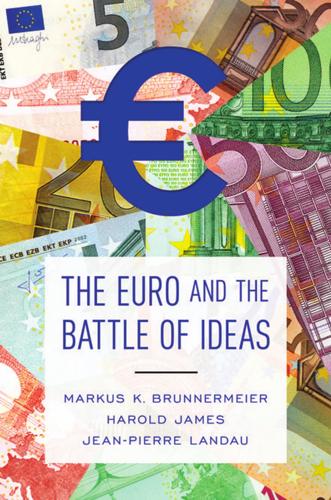
The Euro and the Battle of Ideas
by
Markus K. Brunnermeier
,
Harold James
and
Jean-Pierre Landau
Published 3 Aug 2016
who overrun Mediterranean civilization.9 The second interpretation is that these preferences represent deep historical traditions, cultures, and memories—so deeply rooted that they cannot be erased by the persuasive powers of superficial rationality and logic. In particular, Germans were so seared by the experience of catastrophic hyperinflation in the early twentieth century that ninety years later they repeat a meaningless mantra. But wait a moment: Krugman’s Dark Age is about the revival in the twenty-first century of the principles of Jean-Baptiste Say, a nineteenth-century economist—from France! In fact, in the nineteenth century, most French (and for that matter Italian) economists were, like Say, classical liberals who mentally inhabited a rule-based world.
…
The Croats and Slovenes wanted to get away. In the Soviet Union, inflation appeared as an instrument of the central Moscow bureaucrats, and more remote areas wanted to break away. Hyperinflation thus fueled the national tensions that broke up federal systems in the Soviet Union and Yugoslavia. The response to German hyperinflation in the 1920s was the institution of a new banking law that protected the central bank (Reichsbank) from government intervention. The 1957 Bundesbank Law also guaranteed the autonomy of the new central bank’s monetary policy. In consequence, there were spectacular conflicts when Chancellor Konrad Adenauer in the late 1950s or Helmut Schmidt in the late 1970s attacked the Bundesbank for acting as a brake on growth (in other words, for behaving as an independent central bank is supposed to behave).
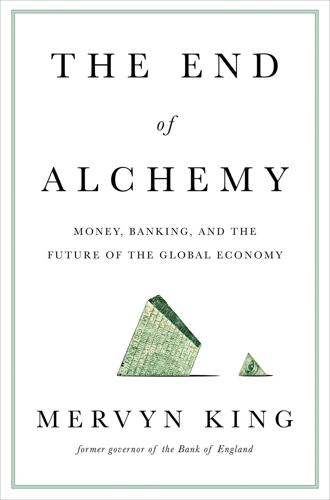
The End of Alchemy: Money, Banking and the Future of the Global Economy
by
Mervyn King
Published 3 Mar 2016
Abe, Shinzo, 363 ABN Amro, 118 Acheson, Dean, 368 Ahmed, Liaquat, The Lords of Finance, 158 AIG, 142, 162 alchemy, financial, 5, 8, 10, 40, 50, 91, 191–2, 257, 261, 263–5, 367, 369; illusion of liquidity, 149–55, 253–5; maturity and risk transformation, 104–15, 117–19, 250–1, 254–5; pawnbroker for all seasons (PFAS) approach, 270–81, 288, 368 Ardant, Henri, 219 Arrow, Kenneth, 79–80, 295 Asian financial crisis (1990s), 28, 349, 350 Asian Infrastructure Investment Bank, 349–50 Australia, 74, 259, 275, 348 Austria, 340, 341 Austro-Hungarian Empire, 216 Bagehot, Walter, 212, 218, 335; Lombard Street (1873), 94–5, 114–15, 188, 189, 190, 191–2, 202, 208, 251, 269 Bank for International Settlements, 31, 255, 276, 324 Bank of America, 103–4, 257 Bank of England, 169, 217, 275, 280, 320–1; Bank Charter Act (1844), 160, 198; during crisis, 36, 37–8, 64, 65, 76, 118, 181–3, 184, 205, 206; Financial Policy Committee, 173; garden at, 73–4; gold reserves, 74, 75, 77, 198; governors of, 6, 12–13, 52–3, 175–6, 178; granting of independence to (1997), 7, 166, 186; history of, 92, 94, 156–7, 159, 160, 180–1, 186, 188–201, 206, 335; inflation targeting policy, 7, 167, 170, 322; Monetary Policy Committee (MPC), 173, 329–31; as Old Lady of Threadneedle Street, 75; weather vane on roof, 181 bank runs, 37–8, 93, 105–8, 187–92, 253–4, 262 Bankia (Spanish bank), 257–8 banking sector: balance sheets, 31, 103–4; capital requirements, 137–9, 255–6, 258, 280; commercial and investment separation, 23, 98, 256, 257; creation of money by, 8, 59–63, 86–7, 91, 161, 253, 263; as dangerous and fragile, 8, 23, 33, 34, 36–7, 91–2, 105, 111, 119, 323–4; deposit insurance, 62, 107–8, 137, 254–5, 328; European universal banks, 23–4; and ‘good collateral’, 188, 190, 202–3, 207, 269; history of, 4–5, 18–19, 59–60, 94–5, 187–202, 206–7; implicit taxpayer subsidy for, 96–7, 107, 116–17, 191–2, 207, 254–5, 263–4, 265–6, 267–8, 269–71, 277; interconnected functions of, 95–6, 111–12, 114–15; levels of equity finance, 103, 105, 109, 112, 137–9, 173, 202, 254–9, 263, 268, 280, 368 see also leverage ratios (total assets to equity capital); liquidity support stigma, 205–7; misconduct scandals, 91, 100, 118, 151, 256; narrow and wide banks, 263–5, 266–7, 279; political influence of, 3, 6, 288–9; recapitalisation of (October 2008), 37–8, 201; taxpayer bailouts during crisis, 4, 38, 41, 43, 93, 94, 106, 118, 162, 243, 247, 261, 267–8; ‘too important to fail’ (TITF), 96–7, 99, 116–17, 118, 254–5, 263–4, 279–80; vast expansion of, 23–4, 31–3, 92–4, 95, 96–9, 115–18; visibility of, 92–3, 94; see also alchemy, financial; central banks; liquidity; regulation Banque de France, 159 Barclays, 95 Barings Bank, 137, 193 ‘behavioural economics’, 132–4, 308, 310 Belgium, 201, 216, 340 Benes, Jaromir, 262 Bergsten, Fred, 234 Berlusconi, Silvio, 225 Bernanke, Ben, 28, 44, 91, 158, 175–6, 183, 188, 287 bills of exchange, 197–8, 199 bitcoins, 282–3 Black, Joseph, 56 Blackett, Basil, 195–6 Blair, Tony, 186 Blakey, Robert, The Political Pilgrim’s Progress (1839), 251–3 Blinder, Alan, 164 BNP Paribas, 35 Brazil, 38 Brecht, Bertolt, The Threepenny Opera (1928), 88, 93 Bremer, Paul, 241 Bretton Woods system, 20–1, 350, 352 British Empire, 216, 217 Bryan, William Jennings, 76, 86–7 Buffett, Warren, 102, 143 building societies, 98 Bunyan, John, Pilgrim’s Progress (1678), 251 Cabaret (film, 1972), 52, 83 Cambodia, 246 Cambridge University, 12, 83, 292–3, 302 Campbell, Mrs Patrick, 220 Campbell-Geddes, Sir Eric, 346 Canada, 116, 167, 170 capitalism, 2, 5, 8, 16–21, 42, 155, 366; as best way to create wealth, 17, 365–6, 369; and end of Cold War, 26–7, 365; money and banking as Achilles heel, 5, 16–17, 23–6, 32–9, 40–1, 50, 369–70; Schumpeter’s ‘creative destruction’, 152; see also market economy Carlyle, Thomas, 16 Carney, Mark, 176 Caruana, Jaime, 324 central banks, 156–9; accountability and transparency, 158, 168, 169–70, 175–6, 178–80, 186, 208; and ‘constrained discretion’, 169–70, 186; creation of ‘emergency money’, 48, 65–6, 71, 86, 172, 182–3, 189, 196–7, 201–7, 247, 275; during crisis, 36–9, 64, 65, 76, 113, 118, 158, 159, 162, 181–4, 205, 206, 335; and disequilibrium, 46–7, 171–2, 175, 208, 329–32; exclusive right to issue paper money, 160, 165, 283; and expectations, 28, 176–8, 304; forecasting by, 179–80, 304–5; future of, 207–10; gold reserves, 74–5, 77, 198; history of, 159–60, 161–2, 180–1; independence of, 5–6, 7, 22, 71, 165–7, 169–70, 185–6, 209–10, 357; industry of private sector watchers, 178; integrated policy framework, 187, 208–9, 288; as ‘lenders of last resort’ (LOLR), 94–5, 109–10, 163, 187–97, 202–7, 208, 259, 268, 269–70, 274–5, 288; and ‘macro-prudential policies’, 173–5, 187; monetary policy rules, 168–9; and money supply, 63, 65–6, 76, 86–7, 162, 163, 180–4, 192, 196–201; pawnbroker for all seasons (PFAS) approach, 270–81, 288, 368; in post-crisis period, 43–4, 63, 76, 162–3, 168–9, 173, 175, 179–80, 183–6; printing of electronic money by, 43, 52, 359; proper role of, 163, 172, 174–5, 287; and swap agreements, 353; see also Bank of England; European Central Bank (ECB); Federal Reserve central planning, 20, 27, 141 Chiang Mai Initiative, 349 ‘Chicago Plan’ (1933), 261–4, 268, 273, 274, 277–8 China, 2–3, 22, 34, 77, 306, 322, 338, 357, 362–3, 364; banking sector, 92, 93; export-led growth strategy, 27–8, 319, 321, 323–4, 356; falling growth rates, 43–4, 324, 363; medieval, 57, 68, 74; one child policy in, 28; problems in financial system, 43–4, 337, 362–3; savings levels in, 27–8, 29, 34; trade surpluses in, 27–8, 46, 49, 319, 321, 329, 364 Chou Enlai, 2 Churchill, Winston, 211, 366 Citigroup, 90, 99, 257 Clark, Kenneth, 193 Clinton, President Bill, 157 Cobbett, William, 71–2 Cochrane, John, 262 Coinage Act, US (1792), 215 Cold War, 26–7, 68, 81–2, 350, 365 Colley, Linda, 213–14 communism, 19, 20, 27 Confucius, 10 Cunliffe, Lord, 178, 193 currencies: break-up of sterling area, 216; dollarisation, 70, 246, 287; ‘fiat’, 57, 283; during government crises, 68–9; monetary unions, 212–18, 238–49 see also European Monetary Union (EMU, euro area); optimal currency areas, 212–13, 215, 217, 248; ‘sterlingisation’ and Scotland, 244–7, 248; US dollar-gold link abandoned (1971), 73; virtual/digital, 282–3; see also exchange rates cybercrime, 282 Cyprus, 363–4 Czech Republic, 216 Debreu, Gerard, 79–80, 295 debt, 140; bailouts as not only response, 343–4; as consequence not cause of crisis, 324–5; forgiveness, 339–40, 346–7; haircut on pledged collateral, 203, 204, 266, 269, 271–2, 275, 277–8, 280; household, 23, 31, 33–4, 35; importance of for real economy, 265–6; as likely trigger for future crisis, 337–8; and low interest rates, 337; quantitative controls on credit, 173, 174–5; rise in external imbalances, 22–3, 24–5, 27–31, 33–4, 45–7, 48–9, 236, 306–7, 319–24, 329–30, 338, 364; and rising asset prices, 23, 24, 31–2; role of collateral, 266–7, 269–81; see also sovereign debt decolonisation process, 215 deflation, 66, 76, 159, 164, 165 demand, aggregate: ‘asymmetric shocks’ to, 213; disequilibrium, 45–9, 316, 319–24, 325–7, 329–32, 335, 358–9; in EMU, 221, 222–3, 229, 230, 236; during Great Stability, 319–24; and Keynesianism, 5, 20, 41, 293, 294–302, 315–16, 325–6, 327, 356; and monetary policy, 30, 41–9, 167, 184–5, 212–13, 221, 229–31, 291–2, 294–302, 319–24, 329–32, 335, 358; nature of, 45, 325; pessimism over future levels, 356, 357–60; price and wage rigidities, 167; and radical uncertainty, 316; rebalancing of, 357, 362–3, 364; saving as source of future demand, 11, 46, 84–5, 185, 325–6, 356; as weak post-crisis, 38–9, 41–2, 44–5, 184–5, 291–2, 337, 350, 356–60 democracy, 26–7, 168, 174, 210, 222, 318, 348, 351; and euro area crisis, 224–5, 231, 234–5, 237–8, 344; and paper money, 68, 77; rise of non-mainstream parties in Europe, 234–5, 238, 344, 352 demographic factors, 354, 355, 362 Denmark, 216–17, 335 derivative instruments, 32–3, 35–6, 90, 93–4, 97–8, 100, 101, 117, 141–5; desert island parable, 145–8 Dickens, Charles, 1, 13–14, 233 disequilibrium: and aggregate demand, 45–9, 316, 319–24, 325–7, 329–32, 335, 358–9; alternative strategies for pre-crisis period, 328–33; and central banks, 11–12, 46–7, 171–2, 175, 208, 329–32; continuing, 42, 45–8, 49, 171–2, 291, 334–5, 347, 353, 356–70; coordinated move to new equilibrium, 347, 357, 359–65; definition of, 8–9; euro area at heart of, 248, 337; and exchange rates, 319, 322–3, 329, 331, 364; high- and low-saving countries (external imbalances), 22–3, 24–5, 27–31, 33–4, 45–7, 48–9, 236, 307, 319–24, 329–30, 338, 364; in internal saving and spending, 45–8, 49, 313–16, 319–21, 324, 325–6, 329–30, 356; and ‘New Keynesian’ models, 306; the next crisis, 334–5, 336–8, 353, 370; and paradox of policy, 48, 326, 328, 333, 357, 358; and stability heuristic, 312–14, 319–21, 323, 331, 332; suggested reform programme, 359–65 division of labour (specialisation), 18, 54–5 Doha Round, 361 Domesday Book, 54, 85 dotcom crash, 35 ‘double coincidence of wants’, 55, 80, 82 Douglas, Paul, 262 Draghi, Mario, 225, 227, 228 Dyson, Ben, 262 econometric modelling, 90, 125, 305–6 economic growth: conventional analysis, 44–5, 47; as low since crisis, 11, 43–4, 290–2, 293, 324, 348, 353–7; origins of, 17–21; pessimism over future levels, 353–7; in pre-crisis period, 329, 330–1, 351–2; slowing of in China, 43–4, 324, 362; stability in post-war period, 317–18 economic history, 4–5, 15–21, 54–62, 67–77, 107–9, 158–62, 180–1, 206–7, 215–17, 317–18; 1797 crisis in UK, 75; 1907 crisis in US, 159, 161, 196, 197, 198, 201; 1914 crisis, 192–201, 206, 307, 368; 1920-1 depression, 326–7; 1931 crisis, 41; ‘Black Monday’ (19 October 1987), 149; Finnish and Swedish crises (early 1990s), 279; German hyperinflation (early 1920s), 52, 68, 69, 86, 158–9, 190; Latin American debt crisis (1980s), 339; London banking crises (1825-66), 92, 188–90, 191–2, 198, 201; panic of 1792 in US, 188; see also Great Depression (early 1930s) The Economist magazine, 108–9 economists, 78–80, 128–31, 132–4, 212, 311; 1960s evolution of macroeconomics, 12, 16; forecasting models, 3–4, 7, 122–3, 179–80, 208, 305–6; Keynes on, 158, 289; see also Keynesian economics; neoclassical economics Ecuador, 246, 287 Egypt, ancient, 56, 72 Eliot, T.S., Four Quartets, 120, 290 emerging economies, 39, 43, 337, 338, 361; export-led growth strategy, 27–8, 30, 34, 319, 321, 324, 349, 356; new institutions in Asia, 349–50; savings levels in, 22–3, 27–8, 29, 30; ‘uphill’ flows of capital from, 30–1, 40, 319; US dollar reserves, 28, 34, 349 ‘emotional finance’ theory, 133–4 Engels, Friedrich, 19 Enron, 117 equity finance, 36, 102, 103, 140, 141, 143, 266, 280; and ‘bail-inable’ bonds, 112; in banking sector, 103, 105, 109, 112, 137–9, 173, 202, 254–9, 263, 268, 280, 368 see also leverage ratios (total assets to equity capital); and limited liability, 107, 108, 109 European Central Bank (ECB), 137, 162, 166, 232, 339; and euro area crisis, 203–4, 218, 224–5, 227–8, 229, 231, 322; and political decisions, 218, 224–5, 227–8, 231–2, 235, 344; sovereign debt purchases, 162, 190, 227–8, 231 European Monetary Union (EMU, euro area), 62, 217–38, 337–40, 342–9, 363–4; creditor and debtor split, 49, 222–3, 230–1, 232–7, 338, 339–40, 342–4, 363–4; crisis in (from 2009), 138, 203–4, 218, 223–31, 237–8, 276, 338, 339–40, 3512, 368; disillusionment with, 234–5, 236, 238, 3444; divergences in competitiveness, 221–3, 228, 231, 232–3, 234; fiscal union proposals (2015), 344; at heart of world disequilibrium, 248, 337; inflation, 70, 221–2, 232, 237; interest rate, 221–2, 232, 237, 335; launch of (1999), 22, 24–5, 218, 221, 306; main lessons from, 237; and political union issues, 218, 220, 235, 237–8, 248–9, 344, 348–9; ‘progress through crisis’ doctrine, 234; prospects for, 232–3, 345–6; sovereign debt in, 162, 190, 224, 226–8, 229–31, 258, 338, 339–40, 342–4; transfer union proposal, 224, 230, 231, 233, 234, 235, 237, 344; unemployment in, 45, 226, 228, 229–30, 232, 234, 345; value of euro, 43, 228–9, 231, 232, 322 European Stability Mechanism (ESM), 228 European Union, 40, 235–6, 237–8, 247, 248–9, 348–9; no-bailout clause in Treaty (Article 125), 228, 235–6; Stability and Growth Pact (SGP), 235, 236 Exchange Rate Mechanism (ERM), 219, 220 exchange rates: and disequilibrium, 319, 322–3, 329, 331, 364; and EMU, 222, 228–9, 338–9, 363–4; exchange controls, 21, 339; fixed, 20–1, 22–3, 24–5, 72–3, 75–6, 339, 352, 353, 361; floating, 21, 338, 353, 361–2; and ‘gold standard’, 72–3, 75–6; risk of ‘currency wars’, 348; and wage/price changes, 213 Federal Deposit Insurance Corporation (FDIC), 62, 137, 328 Federal Open Market Committee, 179 Federal Reserve, 45, 65, 74, 137, 157–8, 162, 168–70, 175, 178–9, 320; in 1920s/30s, 192, 326–7, 328, 349; during crisis, 39, 76, 107, 113, 183, 184; discount window, 206; dual mandate of, 167–8; opening of (1914), 60, 62, 159–60, 194–5, 196, 197 Ferrer, Gaspar, 193 Field, Alexander, 355 Financial Conduct Authority, UK, 260 financial crises, 11–12, 34; and demand for liquidity, 65–6, 76–7, 86, 106, 110, 119, 148, 182, 187–92, 194, 201–7, 253–4, 367; differing causes of, 307, 316–17, 327–8; frequency of, 2, 4, 20, 92, 111, 316–17; and ‘gold standard’, 75, 165, 195; and Minsky’s theory, 307–8, 323; narrative revision downturns, 328, 332–3, 356, 357, 58–9, 364; the next crisis, 334–5, 336–8, 353, 370; as test beds for new ideas, 49–50; see also economic history financial crisis (from 2007): articles and books, 1–2, 6; central banks during, 36–9, 64, 65, 76, 113, 118, 158, 159, 162, 181–4, 205, 206, 335; desire to blame individuals, 3, 89–90; effects on ordinary citizens, 6, 13, 41; the Great Panic, 37–8; interest rates during, 150–1, 181, 335; LIBOR during, 150–1; liquidity crisis (2007-8), 35–8, 64–5, 76, 110; money supply during, 181–3; parallels with earlier events, 90–2, 193; post-crisis output gap, 42, 291, 337; short-term Keynesian response, 39, 41, 48, 118–19, 326, 328, 356; ‘small’ event precipitating, 34–5, 323; unanswered questions, 39–43; underlying causes, 16–17, 24–5, 26–39, 40, 307, 319–26, 328; weak recovery from, 43–4, 48, 291–2, 293, 324, 337, 355, 364, 366 financial markets, 64–5, 113, 117–18, 141–5, 149, 184, 199–200, 314–15; basic financial contracts, 140–1; desert island parable, 145–8; and radical uncertainty, 140, 143, 144–5, 149–55; ‘real-time’ trading, 153–4, 284; see also derivative instruments; financial products and instruments; trading, financial financial products and instruments, 24, 35–6, 64, 99–100, 114, 117, 136–7, 258, 278, 288; see also derivative instruments Finland, 159, 279 First World War, 88–9, 153, 164, 178, 200–2, 307; financial crisis on outbreak of, 192–201; reparations after, 340–2, 343, 345–6 fiscal policy, 45, 184, 347–8, 352, 358; and Keynesianism, 78, 181, 292, 300, 356; in monetary unions, 222–3, 235; short-term stimulus during crisis, 39, 118–19, 356 Fisher, Irving, 163, 261 fractional reserve banking, 261 France, 93, 201, 216, 219, 221, 236, 248, 348, 364; and euro area crisis, 228–9, 231, 236, 322; occupation of Ruhr (1923), 340; overseas territories during WW2, 242; revolutionary period, 68, 75, 159 Franklin, Benjamin, 58, 127 Friedman, Milton, 78, 130, 163, 182, 192, 262, 328 Fuld, Dick, 89 futures contracts, 142, 240–1, 295–6 G20 group, 39, 255, 256, 351 G7 group, 37–8, 351 Garrett, Scott, 168–9 Geithner, Timothy, 267 George, Eddie, 176, 330 Germany, 93, 161, 162, 184, 219, 322, 341, 357; Bundesbank, 166, 219, 228, 232; and EMU, 219–22, 224, 227, 228, 230, 231–2, 234–6, 248, 338, 340, 342–3, 345; export-led growth strategy, 222, 319, 363–4; hyperinflation (early 1920s), 52, 68, 69, 86, 158–9, 190; Notgeld in, 201–2, 287; reunification, 219, 342; trade surpluses in, 46, 49, 222, 236, 319, 321, 356, 363–4; WW1 reparations, 340–2, 343, 346 Gibbon, Edward, 63, 164 Gigerenzer, Professor Gerd, 123, 135 Gillray, James, 75 global economy, 349–54, 361; capital flows, 20–1, 22, 28, 29, 30–1, 40, 319, 323; rise in external imbalances, 22–3, 24–5, 27–31, 33–4, 45–7, 48–9, 236, 307, 319–24, 329–30, 338, 364; see also currencies; exchange rates; trade surpluses and deficits Goethe, Johann Wolfgang von, Faust, 85–6 ‘gold standard’, 72–3, 75–6, 86, 165, 195, 200–1, 216–17, 348, 352 Goldman Sachs, 98, 109, 123, 257 Goodwin, Fred, 37, 89 Grant, James, 327 Great Depression (early 1930s), 5, 16, 20, 158, 160, 226, 348, 355; dramatic effect on politics and economics, 41; Friedman and Schwartz on, 78, 192, 328; and ‘gold standard’, 73, 76; US banking crisis during, 90–1, 108, 116, 201 Great Recession (from 2008), 6, 38–9, 163, 290–2, 326 Great Stability (or Great Moderation), 6, 22, 45–7, 71, 162, 208, 305, 313–14, 318–24, 325–6; alternative strategies for pre-crisis period, 328–33; monetary policies during, 22, 25, 46–7, 315 Greece, 216, 221, 222, 225–31, 338–40, 364; agreement with creditors (13 July 2015), 230–1, 346; crisis in euro area, 223–4, 225–7, 229, 230–1, 236, 258, 338–40; debt restructured (2012), 226–7, 229, 236, 339, 343–4, 346; national referendum (July 2015), 230; sovereign debt, 224, 226–7, 339–40, 342–4, 346–7; Syriza led government, 229, 235 Greenspan, Alan, 157–8, 164, 175, 317 Gulf War, First (1991), 238 Hahn, Frank, 79 Halifax Bank of Scotland (HBoS), 37, 118, 206, 243 Halley, Edmund, 122 Hamilton, Alexander, 188, 202, 215 Hankey, Thomas, 191–2 Hansen, Alvin, Full Recovery or Stagnation?
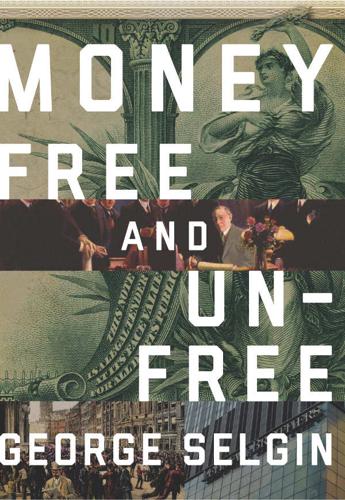
Money Free and Unfree
by
George A. Selgin
Published 14 Jun 2017
The decision to form an independent monetary authority is most likely to be made when rival political parties have little to lose by cooperating to restore a depressed inflation-tax base, such as immediately following an inflation-based capital levy that has greatly increased the public’s estimate of the likelihood of future high inflation. Historically, then, central banks are most likely to be given independence by democratic governments in the wake of relatively severe inflations. The Reichsbank, for example, gained independence at the end of the German hyperinflation. In the United States, the “accord” giving the Federal Reserve greater independence from the Treasury came in the wake of the post–World War II inflation. Cross-sectionally, our argument predicts that independent central banks—serving the need for a commitment device—should be found more commonly in pluralistic democracies than in autocratic states where a ruling lineage has secure tenure.
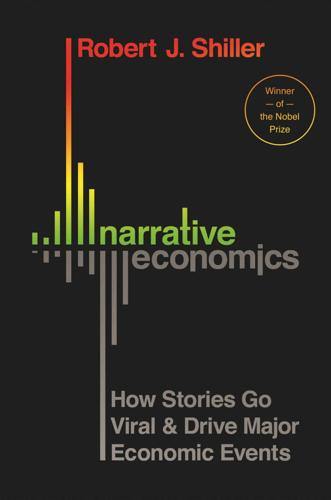
Narrative Economics: How Stories Go Viral and Drive Major Economic Events
by
Robert J. Shiller
Published 14 Oct 2019
Consider, for example, this sermon by Reverend George Richards of the First Congregational Church of Litchfield, Connecticut, on February 22, 1863: How, in contrast with the greedy speculators, in office and out of it, who have prowled, like famished wolves, round our fields of carnage—stealing everything they could lay their hands on—robbing the national treasury—purloining from the camp-chest—pilfering from the wounded in the hospitals—appropriating to themselves the little comforts meant for the dying, if not stripping the very dead!15 During the 1917–23 German hyperinflation, the inflation rate was astronomical, and not due to any war. Prices in marks rose on the order of a trillionfold. And yet many people were unable to identify the malefactor who was causing inflation. Irving Fisher, an American economist who visited Germany at the time, found that Germans did not blame their own government, which had been printing money excessively.

Slouching Towards Utopia: An Economic History of the Twentieth Century
by
J. Bradford Delong
Published 6 Apr 2020
The weaknesses the reparations created did not lead directly to the rise of Adolf Hitler—that came later. But they were key to the destabilization of the Weimar Republic and to its pre-Hitler collapse from a parliamentary democracy into a regime of Caesarist rule by presidential decree. How big and important was this German hyperinflation? Back in 1914, the German currency, the Reichsmark, had been worth 25 US cents. By the end of 1919, the Reichsmark was worth just 1 cent. It then recovered somewhat, reaching a value of 2 cents by the end of 1920. But the government kept spending and printing, and by the end of 1921, the mark was back down to 0.33 of a cent, an inflation rate of 500 percent per year, 16 percent per month, 0.5 percent per day.
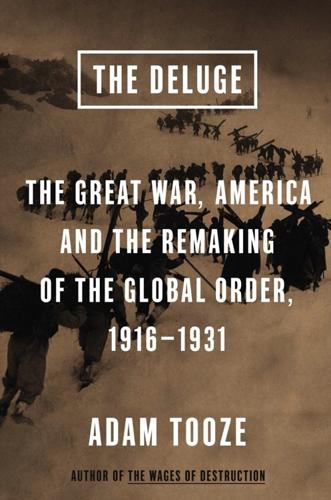
The Deluge: The Great War, America and the Remaking of the Global Order, 1916-1931
by
Adam Tooze
Published 13 Nov 2014
It was based on the idea that since Germany had evaporated away its internal debt, if it imposed taxes equal to those of its neighbours then it should be able to generate a cash surplus with which to finance its reparations obligations.49 The fact that for every debtor relieved by the German inflation there was also an offsetting financial loss was not part of the calculation. Nor did the obvious damage that German productive capacity had suffered during the Ruhr occupation and the hyperinflation enter into the narrowly financial discussions. The Dawes Plan did, however, recognize what was a key problem, the destabilizing effect on the currency markets of exchanging huge quantities of Reichsmarks for dollars. In future, a resident reparations agent would see to it that Berlin’s transfers did not unduly destabilize the markets.
…
V. 184 Dillon, John 190 diplomacy armistice see armistice negotiations at Brest-Litovsk see Brest-Litovsk Treaty Dawes Plan 453–61 dragging countries into the war 33–4 Genoa and London’s diplomacy at breaking point 433–9 Kasumigaseki 25 League of Nations Covenant 255–6, 259–70, 271, 324–6, 335 London’s debt settlement with Washington 439 naval conferences see London Naval Conference (1930); Washington Naval Conference ‘new diplomacy’ 517 power shift through interaction of military force, economics and 23–30 between Russia and France 176 Soviet diplomacy to revolutionize China 419–21, 478–80 Stresemannian 23, 462, 488 see also Locarno Treaty at Versailles see Versailles/ Paris peace conferences and Treaty Wilsonian Treaty Fight 335–8 see also specific treaties disarmament/armaments limitation 45, 53, 227, 264–5, 277, 280, 313, 504, 506 naval see naval disarmament Dmowski, Roman 326 DNVP (German National People’s Party) 320, 459–61, 503 Dominican Republic 44 Don 130 Doshikai party, Japan 94 Duan Qirui 90–92, 98, 100, 101, 104, 321, 323, 403 Dublin, Easter uprising 79, 180, 376 Duisburg 319 Dutch East Indies, US private long-term investment (December 1930) 476 DVP (German People’s Party) 320, 450 Dyer, Reginald 383–4, 385 East Germany 275 Eastern Front 33, 46–7, 73, 139, 143 Ebert, Friedrich 111, 219, 223, 238, 312, 317–18, 460 economic models of democratic capitalism 200–201 of inter-Allied cooperation 204–5 of planned national economy 199–200 economic supremacy see new world order: and economic supremacy Edward, Prince of Wales 387 Egypt British proctectorate 193, 378–80 deployment of Imperial Forces, February 1920 375 economic dislocation through imperial war effort 212, 213, 378–9 Hoover moratorium 498 independence 379–80 martial law 379, 380 nationalism 378–80 Wafd 378, 380 Eichhorn, Hermann von 150 Eisner, Kurt 242 Emergency Fleet Corporation 35, 203 Engels, Friedrich 138 Entente 1916 plans and struggles 33–4 1917 January statement of war aims and demands 52 1917 offensives 40 1917 paralysis 74 1918 final drive 40 and the armistice see armistice negotiations blockade 34–5, 39, 56, 473 Brest-Litovsk’s wrong-footing of 116 and China see China: and the Entente concentric assaults on Central Powers 33–4, 40 as a democratic coalition, and Russia 69–73 economic effort 199 and the end of Ottoman and Habsburg empires 9 energizing of 173–98 and the German U-boat campaign 74–5 see also U-boats and German war reparations see reparations and global strategic entanglements 20 gold reserves 36–7, 51, 52 Hindenburg line assault 173, 200 and the Hungarian-Romanian War 410 Inter-Allied Conference (November 1917) 116, 197 inter-Allied economic cooperation 204–5 Inter-Allied Supply Council 207 Italy’s siding with 33, 116, 176 and Japan see Japan: and the Entente London Treaty 116, 176, 177, 178, 306–7, 438 Petrograd war conference 52 Princes’ Islands conference proposal 236 Romania’s siding with 47 and Russia/USSR: attempt in 1919 to roll back Bolshevik revolution 410–11; and the Entente as a democratic coalition 69–73; Genoa Conference see Genoa Conference; Russian blockade 235–6; Russian scenario as auxiliary of German imperialism 156–7; Russia’s repudiation of foreign debts 129, 425; Russia’s separate peace at Brest 143 Siberian intervention 156–70 and the Soviet regime 235–7, 434 Supreme War Council 205 Sykes-Picot agreement 193 and Turkey 52, 381 US relations see United States of America: Entente relations war finance 36–40, 48–9, 50, 51, 52–3, 78, 173, 206–8; and debts 298–304, 302, 349, 366, 372–3, 439, 440, 466–70, 468, 496–7, 498; and US tax on exports 46 Enver Pasha 147, 148, 416, 418 Enzeli 415 Erzberger, Matthias 24, 75, 82, 112, 113, 154–5, 168, 220, 221–2, 223, 228, 243–4, 448 assassination 426 Der Völkerbund 221 and Versailles 312, 313, 315, 316, 317 Brest-Litovsk peace 114, 118, 138–9 Essen 319 Estonia 117, 134, 167 declaration as a republic 232 Europe as the ‘Dark Continent’ 17–18, 26 European Coal and Steel Community (ECSC) 205, 290 European economy 290, 293, 320, 428, 429 European integration 290, 492 European Peace Pact, Locarno Treaty see Locarno Treaty European rail network 427–8 European Union 109, 205, 276 exceptionalism 27, 28–9, 54–5 Falkenhayn, Erich von 47 fascism 17, 174, 354 Italian 17, 174, 311, 354, 433; and the 1919 election 311; and Corfu 446–7; and France 442; German ties with 494; launch of Mussolini’s Fascist Party 10; and the lire 466–7; and the power vacuum in Rome 433; and the US 7 Fawcett, Millicent 185 FBI 339–40 Federal Reserve 334, 344–5, 346–7, 358–9, 500, 504 Board 38–9, 51, 206, 304, 344, 345 interest rate 50 per cent increase 345, 349 Feisal, Amir, Feisal I of Iraq 380, 381 Feng of Zhili, General 90, 101, 104 Finland 122, 150–51, 161, 167 declaration as a republic 232 Finno-German march on Petrograd 150, 155 US debts 507 First International Peasant Conference 421 First World War see World War I Fiume 308, 310, 311, 337 Five Year Plan, Soviet 483–4, 511–12 Flanders 40, 82 Foch, Ferdinand, Marshall 158, 205, 227, 264 Fontainebleau memorandum 285 Ford, Henry 200–201, 202 Fordney-McCumber tariff, US 349 France/the French 1917 crisis 74, 174–5 aircraft 202 Atlantic alliance 24 Bank of France 215, 356, 361, 457, 469–70, 500 Bloc national government 360 and Britain: British suspicion of the French 395; and debts 367; French goal of trilateral transatlantic pact 268, 290; and the Genoa Conference 431, 433, 435; and German reparations 455–6, 461, 496; and Germany’s appeal for credit 428; and the Kellogg-Briand Pact 472–3; and the MacDonald Labour government 455–6, 457; and the Middle East 193–4, 378, 379, 380; mutual guarantees against Germany 431; Poincaré’s pursuit of an Entente 431, 453; and the Royal Navy’s support 491; solidarity 59; and the threats of emergent powers of Japan and Germany 20; trilateral security guarantee with US 277–80; and the US 277–80, 400–401; and the Washington Conference 400–401 see also Entente Cartel de Gauche 457, 467 coal imports 365–6, 426 Communist Party 418, 430–31 and conscription 265 and Czechoslovakia 280 economy 199, 469–70; credit 37, 372; deflation 502; the franc 37, 208, 355, 361, 366, 456–7, 458, 459, 469, 497, 506; GDP of French Empire 13; gold reserves 469–70, 495, 502; and the gold standard 502; inflation 355–6, 469; public/foreign debt 249, 298, 299, 302, 304, 349, 366, 367, 440, 467–70, 468, 473, 496–7, 498, 506–7; stabilization 360–61, 362, 495; wartime wholesale price dislocation 213 food imports 74 French Army 33, 73–4, 491–2; invasion/occupation of the Ruhr 440–46, 447–9, 452–7, 459, 473; mutiny 74, 174; of the Rhine 442 French Empire 13, 20 French Navy 235, 401 and the Genoa Conference 431, 433, 435 and Germany: and Alsace-Lorraine see Alsace-Lorraine; and the Austro-German customs union 495; Briand and Stresemann relationship/discussions 473, 492, 493; Clemenceau and German sovereignty 272–4, 289; disarmament goal 277; Franco-British guarantees against Germany 431; and the French transatlantic alliance 276; German attacks in 1918 on Allied lines in France 173; German occupation and devastation of northern France 279; German violations of laws of war 278–9; and Hitler 450; and the incitement of German nationalism 273; invasion/occupation of the Ruhr 440–46, 447–9, 452–7, 459, 473; occupation of Frankfurt (1920) 337; and reparations see reparations: and France; and the Rhineland 176, 227, 272, 274, 277, 278, 288, 440–46; Thoiry initiative 473; and the US after the Ruhr crisis 453; Versailles and the balancing of French security with German sovereignty 272–5, 448–9 Herriot government 457, 458–9 imperialism 17, 22, 223–4, 273, 280 Inter-Allied Conference (November 1917) 197 and Italy 308; and Mussolini 447, 491 and Japan 323, 325, 327 and the League of Nations 257–8, 261, 262, 263, 264–5, 266–8, 271, 277, 287, 325–6, 470, 492–3 left Radicals 457 and the London Naval Conference 491–2, 493 loss of French global power through war 5, 11 and the Middle East 193–4, 378, 380 military spending 361, 514 Napoleonic France 273, 289 national wealth 12 as part of Entente see Entente and Poland 280, 412 reasons for entering war 42 reconstruction of northern France 292, 355–6, 367 and Romania 280 and Russia/USSR 176, 235, 236, 276, 425; and the Kellogg-Briand Pact 472 see also Entente Senegalese rights deal 227 Socialists 42, 55, 175, 221, 240, 241, 250, 457; and the Berne conference 241, 242–3; Communist split from 418; and Millerand 361; ‘patriotic’ 241 strikes 247, 356, 360 subordination in new order 289–90 Sykes-Picot agreement 193 and Syria 380, 381 taxation 251 and total war 175–6 trade unions 175 and Turkey 437 Union Sacrée 42, 175 and the US see United States of America: and France and the Versailles conference 5, 255, 256, 257–8, 271–5, 277–80, 281, 286–7, 291 see also Versailles/Paris peace conferences and Treaty war damage 251, 279, 365–6 and war debt relief 298, 299 and the Washington Conference 400–401, 406 and Wilson 240, 276–7 working class militancy 246, 247 franchise British reform 183–5 emerging default of manhood suffrage 515 Indian 386; urban 188 Japanese 259, 324, 356 Russia and the Kronstadt rebellion 422–3 suffragette militants 340 Frankfurt 337 Free Democrats (FDP, Germany) 25 free trade 13, 14, 75, 501 freedom of the seas 16, 45, 53, 75, 120, 226, 228, 257, 268–70 Freikorps 242, 318–19, 337, 426 French, the see France/the French Freud, Sigmund 335 Galin, Republic of 415 Gambetta, Léon 220 Gandhi, Mohandas (Mahatma) 182, 189, 384, 385–8, 436 in South Africa 392 arrest 389–90 Gary, Elbert Henry, ‘Judge’ 341 Gary, Indiana 341 Gaza 193 Geddes, Auckland 395 General Electric 341 Geneva 515 disarmament talks in 1932 504 Protocols 470–71 Genoa Conference (April–May 1922) 430, 433–6 and France 431, 433, 435 and the gold standard 464 and London’s diplomacy at breaking point 433–9 and the Rapallo Treaty 435, 436 and the Soviet Union 433–5 and the US 430 George V 52, 74, 191 George Washington, USS 257 Georgia 44, 147, 148, 161, 167 German Congress of Soviets 237 German National People’s Party (DNVP) 320, 459–61, 503 German People’s Party (DVP) 320, 450 Germany ‘The Aims of German Policy’ 161 and Alsace-Lorraine see Alsace-Lorraine anti-Young campaign 503, 506 armistice see armistice negotiations Austro-German customs union (Zollverein) 494–5 autocracy 86, 155, 170 bankruptcies 503 Bavaria see Bavaria Berlin demonstrations (January 1919) 238 blockade by Entente 34–5, 39, 56, 473 and Britain: attack on British front line (March 1918) 140; and credit 427–9; and the French invasion of the Ruhr 443, 446, 456; Imperial Forces deployed in Germany, February 1920 375; ‘knock-out blow’ goal against Germany 40, 59, 207–8, 296; multilateral trade underwritten by Britain 503; Murmansk intervention and Operation Capstone plans 166–7, 170; and reparations 249–50, 292–5, 349, 427–9; Rhineland security pact 471 see also Locarno Treatyand the Russian revolution 141; and Russian trade possibilities (1921) 427–9; and the U-boat campaign 74–5 Brüning government 493, 494, 503 Centre Party see Centre Party, Germany and China see China: and Germany Christian Democrats (CDU) 24, 25, 75 coal 167, 290, 366, 426, 431, 440, 442, 452, 466 coalition of SPD, Centre Party and Liberals 163, 239, 243, 313, 320 Communism: and the Comintern 413, 449; Communist Party (KPD) 238, 319, 320; coup (21 March 1921) 418; Hamburg uprising 449; January 1919 uprising 238–9; Party’s paramilitary drilling 449; and the Red Army 319, 337, 449; Red Guard detachments 319; USPD slogan ‘All Power to the Soviets’ 409 complicity in Austria’s ultimatum to Serbia 313 Constituent Assembly (February 1919) 237, 239–40 constitutionalism 41, 162 cooperation with Entente and US powers 23 credit 300–301 and Czechoslovakia 281 declaration as a republic 232 democracy 25, 75, 111, 112–13, 130, 223, 224–5, 237–8; and the Constituent Assembly 237, 239–40; Dawes rescue 453–61; and Versailles 312–13; vote for first Reichstag of Weimar Republic 319–20 disarmament 227, 277, 280, 313 DNVP (German National People’s Party) 320, 459–61, 503 DVP (German People’s Party) 320, 450 East Germany 275 economy 199, 200, 237–8; deflation 360, 427, 460, 503; domestic debt 464; and the French invasion of the Ruhr 443; GDP 13; and the gold standard 503; the Goldmark 370; and the Great Depression 495–6, 497–8, 502–3; inflation/hyperinflation 355, 371, 443, 444–5, 454, 464; the mark 436, 443; national wealth 12; and reparations see reparations: and the German economy; stabilization after 1924 by US credit 461, 464–5; trade recovery, 1929–1931 494; wartime wholesale price dislocation 213 and the eight-hour day 247, 426 embassy in Mexico City 65–6 and the EU 276 fascism 17; and Fascist Italy 494 and Finland 150–51, 155 food shortages 111 food subsidies, ending of 431 Foreign Office 65–6, 147–8, 152, 167, 169, 434 and France see France/the French: and Germany Free Democrats (FDP) 25 Freikorps 242, 318–19, 337, 426 and Georgia 148, 161 German Army 40, 82, 112, 139–40, 228; abolition of conscription 277, 313; advance into Russia 135–6; disarmament 227, 277, 280, 313; and Ludendorff’s aims for Russia 161–2; summer of 1918 173; in the Ukraine 154 German embassy in Petrograd 168 German Navy 34–5, 148, 225, 317; battle of Jutland 35; German Admiralty 225; internment in Scapa Flow 271, 317, 395 see also U-boats and the Hague conference on international arbitration 221 High Command 147 Hindenburg programme 48 Hitlerism 495 Homeland Party (Vaterlandspartei) 82, 111, 112, 130 Independent Social Democratic Party see USPD and Italy see Italy: and Germany Kaiser Wilhelm see Wilhelm II of Germany Keynes’ proposal of German foreign bonds 300–301 labour movement 319, 371 leaders of National Socialist Germany 7 and the League of Nations 313, 315–16, 506 Liberal Democrats/Progressive Liberals 24, 34, 75, 111,130, 134–5, 219–20, 239, 312, 315, 317, 318, 319; coalition with SPD and Centre Party 163, 239, 243, 313, 320; Marxism 237 Max von Baden government 224, 225 militarism: 1919 revival 361; military spending 513, 514; radicalization of military policy after Brest 161; rearmament drive 506, 513 National Assembly 237, 238; and Versailles 313, 317, 318–19 National Liberals, Bismarckian 240, 459 nationalism 225, 273–4, 306; DNVP 320, 459–61, 503; and militarism revival (1919) 361; nationalist right 426–7, 494–5; NSDAP see National Socialist German Workers’ Party; putschist movement of 1919 318–19 Nazi 472, 513 nexus between domestic and foreign policy 24–5 and Noske’s politics of order 238–9 NSDAP see National Socialist German Workers’ Party pan-Germans 113, 281, 459–60 parliamentarization 111 and Poland/the Poles 114, 138–9, 161, 285; Silesian boundary dispute 5–6, 281–3, 286, 314, 426 Presidential decree powers 494, 498 Prussia see Prussia putschist movement of 1919 318–19 rearmament drive 506, 513 reasons for entering war 42 reconstruction after World War II 275 Reichsbank 215, 431, 432, 460, 497, 502, 506 Reichstag majority 25, 75, 82, 108, 111, 119, 122–3, 130, 132, 138–9, 140, 153–5, 168, 170, 219–23, 225, 228, 237, 239, 316, 320 Reichstag peace resolution 75, 78–9, 82, 111, 113, 122, 163, 170 restructuring of Weimar state 490 reunification 275–6 Rhineland see Rhineland Ruhr see Ruhr and Russia/USSR: 1917 military defeat of Russia 82, 276; Bolshevik surrender 136; Brest-Litovsk see Brest-Litovsk Treaty; and Communist 1923 militancy 449; effect of Russian Revolution 73; and the Genoa Conference 434–5; German advance into Russia (February 1918) 135–6; German exports 494; Lenin’s economic cooperation proposal with and shift towards Germany 151–2, 156–7, 159, 164, 166, 170, 200; Ludendorff’s aims for a dependent Russian state 161; Murmansk intervention and Operation Capstone plans 166–7, 170; non-aggression pact following Rapallo 475; Petrograd formula for peace 71, 74, 76–8, 79, 115, 124, 183; post-armistice relations 237; Rapallo Treaty 435, 436, 494; and the Red Terror 168–9, 237; response to Left Socialist Revolutionary uprising 165; rumours of treachery by Tsar and Tsarina 70; Russian overshadowing of German history 276; secret police in 1815 silencing pretension to German unity 273–4; Supplementary Treaty to Brest 167–9; USPD slogan ‘All Power to the Soviets’ 409; World War I struggles 70, 81–3 SA (Sturmabteilung) 451 self-determination/sovereignty 113, 114, 117, 119, 138–9, 289, 448–9; and the 1945 peace settlement 275–6; and Versailles 272–6, 287, 289, 436, 448–9 Social Democrats see Social Democratic Party of Germany (SPD) Socialist Party 219, 450 socialists 48, 234, 237; and the Berne conference 241–2; German vote against a socialist republic 237–40 see also Social Democratic Party of Germany (SPD) Spartakist faction 238 Spring offensive 140, 192 starvation 39–40 state capitalism 200 Stresemann and the anchoring of its western orientation 24 strikes 130, 247, 432; general strike (1919) 319 trade unions 43, 237–8, 313, 503 and the Treaty of Westphalia 273 Two Plus Four 1990 negotiations 275–6 U-boats see U-boats and the Ukraine: and Brest-Litovsk 109, 124–6, 130–32, 148–9; fall of Kiev 136; German Army in Ukraine 154; German coup d’état and Hetmanate 150; Ludendorff’s bartering over Ukraine’s return to Moscow 161; maintenance of independence 154; military interference 154–5 unemployment 503 unification in nineteenth century 5 and the US see United States of America: and Germany and Versailles see Versailles/Paris peace conferences and Treaty war reparations see reparations and the Washington Naval Conference 11 Wirth government 370, 371, 426, 431 working-class patriotism 112 and the world economy hierarchy 362 Giolitti, Giovanni 177, 361 Glasgow 356 Glass, Carter 298, 345 global economy see world economy global order see new world order globalization 13–14 of world economy 199 Goering, Hermann 200 gold American 344, 345, 349, 359, 505 and the British Empire 374–5 British reserves 52 Entente reserves 36–7, 51, 52 French reserves 469–70, 495, 502 London as a world supply centre for 209 Russian/Soviet reserves 51, 427 South African 209, 212; Rand gold miners 374–5 standard 207–9, 365, 383, 464, 487–8; Britain 36, 208, 363, 465–6, 500–501, 504; France 502; German 503; Italy 502; Japan 94, 467, 486, 487, 502, 504; US 38, 345, 346, 355, 363, 505 trans-Atlantic gold flow 345 Goltz, Rüdiger von de 150 Gompers, Samuel 340, 341 Gorky, Maxim 128, 422, 424 Goto Shinpei 22, 96, 143, 144, 146 government bonds British 37, 189, 210, 211, 215 European 215 grain 39, 47, 111, 125, 132, 149–50, 237, 310 Great Depression 14, 18, 28, 487–507 and the Austro-German customs union (Zollverein) 494–5 and the Bank of England 500–501 deflation during 345, 487, 495, 500, 502–3, 504 and Germany 495–6, 497–8, 502–3 and Japan 499–500, 501–2 and sterling’s departure from the gold standard 500–501, 504 and the US 345, 488–9, 495–7, 504–6 Great War see World War I Greece and Albania 446 coup by Greek Army 438 and the League of Nations 260 London Treaty’s effect on Greeks 307 and Turkey 381, 382, 390, 437–8 US debts 302, 468, 498 Grey, Sir Edward 62, 92, 95 Groener, Wilhelm 317, 318 Guomindang/Kuomintang, China 90, 91, 100, 101, 478–83 Northern Expedition 480–83, 511 Soviet sponsorship 480–83, 511 Habsburg Empire 3, 5, 9, 173, 177 bartered over Czech assistance in Siberia 158 and the Brusilov offensive 46–7 disintegration 306 Entente self-determination demands 52, 177 and Wilson’s 14 Points manifesto 121 Hague Conference on international arbitration 221, 267 Second Conference 488 Haifa 193 Haig, Douglas, 1st Earl 78 Haiti 44 Hamaguchi Osachi 491, 499 Hamburg 418 Communist uprising 449 Hankou-Wuchang 481 Hannover 274 Hanseatic League 221 Hara Takashi 96, 104, 144, 146, 258, 321, 330, 335, 403 assassination 398–9 Harare 212 Harbin 331–2 Harding, Warren 347, 348, 349, 372 and the Washington Conference 397 Hay, John 15 Hearst, William Randolph 66 hegemonic crisis model 18–20, 26 Helfferich, Karl 166, 169 Helsinki 150 Henderson, Arthur 76, 244 Herrick, Myron T. 456, 469 Herriot, Edouard 457, 458–9, 469, 470 Hertling, Georg von 111, 113, 133, 155, 160–61, 163, 219 Hesse 274, 316 Hindenburg, Paul von 43, 47–8, 57, 82, 111, 129, 155, 219, 317, 494 and Brest-Litovsk 118 Hindenburg armaments programme 200 Hindenburg line 173, 200 Hindenburg programme 48 Hindu–Muslim Lucknow agreement 181, 188, 384, 391–2 Hintze, Paul von 163, 169 Hirsh, Julius 427 Hitchock, Gilbert M. 337 Hitler, Adolf and the 1923 Bavarian crisis 450, 451, 452 as Chancellorship candidate 503 default announcement on Germany’s international obligations 506 effect of World War I on 305 electoral popularity 239 and France 450 and the League of Nations disarmament talks 506 and Lloyd George 306 Mein Kampf 26, 305 and Mussolini 305–6 and the new order 4–5, 18, 23, 26 and the NSDAP 450, 503, 506 and the see also 451 ‘Table Talk’ 162 and the US 6, 7 and the Young Plan 489 ‘Zweites Buch’ (‘Second Book’) 4–5 Ho Chi Minh 421 Hoffmann, Max 114, 117, 126, 127, 131, 133, 135, 150, 166 Hoffmann, Stanley 30 Hohenzollerns 134 Hong Kong 420, 479 Hoover, Herbert 17, 200, 291, 301, 303, 372, 439, 497, 504, 505, 507, 516 and the London Naval >Conference 491 and MacDonald 474, 504 moratorium on political debts 496–7, 498, 502–3, 506, 507 Relief Administration 425, 435 Houghton, Alanson 460 House, Edward M., Colonel 35, 45, 49, 56, 62, 86–7, 145, 159, 192, 197–8, 226, 227, 228, 267 and China 103–4 and Japan, human equality and the League Covenant 324–5, 326 Howard, Sir Esme 471 Hrushevsky, Mykhailo 154 Hugenberg, Alfred 506 Hughes, Charles Evans 46, 368, 372, 395, 406, 425, 441, 443–6, 453, 454, 458, 492 and Geneva Protocols 470 and the Washington Conference 397–8 Hunan 104, 483 Hungary declaration as a republic 232 Hoover moratorium 498 Hungarian Red Army 410 and Keynes’ proposal of German foreign bonds 301 and Russia/USSR 410 threat of national extinction during war 5 uprising and Romanian war (1919) 409–10 US private long-term investment (December 1930) 476 Hymans, Paul 261 hyperinflations, interwar 37, 212, 362 Germany 443, 444–5, 454, 464 Imperial Conference, London 394–6 imperial liberalism 179, 383–93; Imperial Silk Filiature company, Japan 361 Imperial War Cabinet 181, 196–8 imperialism 15–16 anti-colonial activists 23 British 15, 17, 20, 22; post-war challenges and crises 374–93; seen by Wilson as threat to new order 223–4; in Soviet imagination 483 see also British Empire Communist struggle against 111, 412–13, 415–16, 419 see also Bolshevism/Bolsheviks; Communism destructive force of 19–23 French 17, 22, 223–4, 273, 280 German 22 German reparations and echoes of the age of 289 Germany vs imperialism of Entente 313 Italian 22 Japanese 16, 22, 258, 515 ‘liberal imperialism’ 15–16 market-based liberalism as guard against 488 new imperialism of the 1930s 515 of the ‘old world’ 233 US suppression of 15–16 and Wilson 17, 22–3 Independent Labour Party, Britain 26, 76, 79, 183, 241, 296 Independent SPD see USPD India 180–82, 185–90, 196–7, 364, 382–90, 475 and Afghanistan 393 Amritsar massacre 383–4, 385, 387, 463 Chauri Chaura violence 389 Communist movement 387 credit 210 currency and the rupee 209, 210–11, 383 democracy 386 economic drain 209, 383 franchise 188, 386 general elections 386 and Germany’s East African colonies 194 Government of India Bill 385 Indian Army 186, 194, 375 Indian rights in South Africa 392–3 Justice Party 386 and the League of Nations 262 Montagu-Chelmsford reforms 188–9, 210, 382, 383, 385 Muslim minority 181, 384–5, 390 National Congress see Indian National Congress National Liberal League 386 nationalism 180–81, 182, 187, 382–90, 392; and Gandhi’s movement 385–90; and Home Rule/Swaraj 181, 182, 186, 187–9, 382, 385–90; mass movement threatening British rule 382–90; and non-violence 385 Reading’s offer of a Round Table 388–9 and Roy’s Third Worldism 414–15 and silver prices 355 trade balance 209–10 and Turkey 384–5, 390, 391 and the US 210 war services 390 wartime wholesale price dislocation 213 Indian National Congress 181, 186, 188, 383, 392 boycott of Prince of Wales’ visit 387–8 and Gandhi’s movement 385–6 Lucknow agreement 181, 188, 384, 391–2 inflation American: inflation tax 216; inflation–deflation succession (1919–1920) 342–7 British 356–8 and the British Empire 374 French 355–6, 469 German 355, 371, 454; hyperinflation 443, 444–5, 454, 464 global 212–15, 355–8; and wholesale price dislocation 213–14 interwar hyperinflations 37, 212, 362; Germany 443, 444–5, 454, 464 Japanese 355, 363 Keynes on inflationism 356 Soviet 423 Inoue Junnosuke 499 Inter-Allied Conference (November 1917) 116, 197 Inter-Allied Supply Council 207 International Workers of the World (IWW) 340 internationalism ‘bourgeois’ 243 and France 457 Germany’s Atlanticist internationalism 221–2 Great Depression and the tragedy of 487–507 and the Hague Treaties 267 Soviet line of 433–4 Wilsonian 16, 27, 119, 241, 244 without sanctions 517 IRA (Irish Republican Army) 376 Iran 419 Iraq 380–81 Anglo-Iraq Treaty 381 British Mandate 364 independence 381 Ireland conscription in 192, 193 Council of Ireland 376 Dail Eirann 376 deteriorating situation at end of War 227, 375–6; civil war within the South 377; guerrilla war 376 Easter uprising, Dublin 79, 180, 376 Home Rule 179–80, 190–93, 376 and imperial catastrophe 375–7 IRA 376 Irish Free State 376–7, 394 Irish Parliamentary Party 179, 180 and Lloyd George see Lloyd George, David, Ist Earl: and Ireland martial law 376 partitioning 376–7 Sinn Fein see Sinn Fein Unionists 79, 179–80, 191, 376 and the US 190–93, 377 Irish Republican Army (IRA) 376 Ishii Kikujiro, Viscount 103 Islam Britain seen as ‘arch enemy’ of 384 Indian Muslim minority 181, 384–5, 390 Khilafat movement 384, 416 Muslim League 188; Lucknow agreement 181, 188, 384, 391–2 Roy’s Islamic army 416, 418 Soviet attempt to radicalize Asian Muslims 415 isolationism, US 348, 505, 517 Istanbul/Constantinople 381, 390, 437 Italian front 11 Italy 1915–1919 politics and the war effort 176–8 1917 Austro-German advance 82 1918 summer offensive 306 Biennio Rosso 356 bread subsidy 361 British and French support for democratic interventionists 307–8 Caporetto disaster 82, 174, 176 coal 74, 310 constitutionalism 41 and the Corfu crisis 446–7 democratic interventionists 307–8 economy: deflation 502; and the gold standard 502; the lire 355, 466–7; stabilization 360, 362; wartime wholesale price dislocation 213 see also Italy: public debt Fascio for National Defence 178, 311 fascism see fascism: Italian and Fiume 308, 310, 311 and France see France/the French: and Italy and Germany: 1917 Austro-German advance 82; and fascism 494; and the German U-boat campaign 74; Mussolini and Hitler 305–6; reparations 298 Giolitti government 361 grain imports 310 imperialism 22 Inter-Allied Conference (November 1917) 197 Italian Army 82, 306; Servizio P 177 labour unrest 247, 361 London Treaty 116, 176, 177, 178, 306–7, 308, 310 nationalism 306, 308 Popular Catholic Party 312 post-war sense of second-class status 6 power vacuum in Rome 433 progressives 177 public debt 249; to US 298, 302, 466–7, 468, 498 and self-determination 177 siding with Entente 33, 116, 176 Socialist Party (PSI) 176, 177, 241, 311, 409, 418 unification in nineteenth century 5 and the US 177, 312; balance of payments 12; Hoover moratorium 498; and Italian Fascists 7; US private long-term investment (December 1930) 476; war debts 298, 302, 466–7, 468, 498; and Wilson 307, 308–10 and Versailles 255, 308–11 working class militancy 246, 247 and Yugoslavia 178 Ittihadists 147 IWW (International Workers of the World) 340 J.
…
Mitchell 340, 342, 343, 345 Pan African Congress 374 Panama Canal 44 Paris 74, 140, 173 Commune 138, 240, 422 Conference of Ambassadors 447 economic conference (1916) 205 evacuation of families of American bankers 469 Inter-Allied Conference (November 1917) 197 Peace Conference see Versailles/Paris peace conferences and Treaty Passchendale offensive 78 Patagonia 353 Payer, Friedrich von 111, 134–5, 154, 163, 168–9 peace movement 23 peace settlements 1918 armistice see armistice negotiations Locarno Security Pact see Locarno Treaty and the new order 4, 5 see also Versailles/Paris peace conferences and Treaty between Russia and Central Powers see Brest-Litovsk Treaty see also specific treaties peasantry 408, 415–16, 420–22, 483 Chinese 421, 479, 480, 481, 483 First International Peasant Conference 421 German hyperinflation 443 Peng Pai 479 Penrose, Boise 372 Pentland, John Sinclair, 1st Baron 182 Pershing, John J. 202, 206 independent American Army see United States of America: American Army Persia 330, 377 Peru US private long-term investment (December 1930) 477 wartime wholesale price dislocation 214 Pétain, Philippe 74, 76, 469 Petlura, Simon 412 Petrograd and Brest-Litovsk 118–19 British embassy stormed 168 Comintern Second Congress in 413–17, 418–19 Finno-German march on 150, 155 German embassy 168 proposed occupation of 167 Red Terror 168 Second All-Russian congress 84 Seventh National Congress of the Bolshevik Party 137 Petrograd formula for peace 71, 74, 76–8, 79, 115, 124, 138, 183 Petrograd Soviet 69, 70, 71, 76, 78–9, 83–4, 136, 194 peace formula see Petrograd formula for peace Philippines imperial rule 15 US conquest of 41 US private long-term investment (December 1930) 476 Pilsudski, Joseph 284, 411–12, 417, 475, 483 Pittman Act 210 platinum 153 Poincaré, Raymond 24, 430–31, 440, 469–70 decree powers 456 and the French invasion of the Ruhr 442, 446, 448, 456–7, 473 and French security based on Entente 431, 453 and the Genoa Conference 431, 433 and Lloyd George 431, 454 resignation (1924) 457 retirement 473 Poindexter, Miles, US Senator 230 Poland/Poles Allied sponsorship of new state of Poland 276 assembling and integrating Polish republic 284–5 Bolshevik negotiations (October 1919) 411 and Brest-Litovsk 116, 118, 138–9 and Britain 412 coal 466 declaration of Poland as a republic 232 and France 280, 412 and German–Soviet non-aggression pact 475 and Germany 114, 138–9, 161, 285; Silesian boundary dispute 5, 281–3, 286, 314, 426 inflation 355; hyperinflation 212, 285 Jews 135 and the League of Nations 260 and Lloyd George 285 and Ludendorff 135 Ministry of War 411 National Democrats 284, 411 nationalism 284 Polish-Soviet War 284, 411–13, 417; Treaty of Riga 417 Polish-Ukrainian army 412 Soviet defensive struggle between Polish and Chinese arenas 475, 483 Tsarist anti-Semitism in Russian Poland 43 Uhlans 417 and the Ukraine 411–12 US private long-term investment (December 1930) 476 and Versailles 284–6 wars between 1918 and 1920 284 welfare spending 285 and western protection 109 and Wilson’s 14 Points manifesto 121 and the world economy hierarchy 362 political credit 37 Polk, Frank 322 Popular Catholic Party, Italy 312 Portsmouth, Treaty of 408 Portugal 255 Hoover moratorium 498 power vacuum in the East 134 in Eurasia 21 in Rome 433 in Russia 83 in the Ukraine 124–5 Pravda (newspaper) 128, 232 Preuss, Hugo 315 Princes’ Islands conference proposal 236 private investment 37, 425, 504 US private long-term foreign investment 476–7, 495–6 productivism 201 property rights 430, 434 protectionism 15, 349, 492, 493, 501 Prussia 274, 451 ‘Austro-Prussian War’ 274 democratization 75, 111 House of Lords 112 Kaiser’s constitutional reform promises 73, 75 Prussian guards unit coup plot July 1919 318 secret police in 1815 silencing pretension to German unity 273–4 and Versailles 283, 314, 316 PSI (Italian Socialist Party) 176, 177, 241, 311, 409, 418 Qingdao 89 Quai d’Orsay conference 235, 255 Radek, Karl 126, 137 rail network, European 427–8 Raj see India Rapallo, Treaty of 435, 436, 494 Rathenau, Walther 66, 152, 200, 426, 427, 432, 433, 434–5 assassination 436 Reading, Rufus Isaacs, 1st Marquess of 385, 387, 388 recession cyclical 488 Great Depression see Great Depression US, 1919–1921 345–7, 346 Reconstruction Finance Corporation 505 Red Army 21, 136, 234, 235, 236, 411 Azerbaijan invasion 415 civil war triumph 422 fight against White forces, July 1919, in Ukraine 410 First Red Cavalry Army 417 and German Communist militancy 449 Hungarian 410 Polish-Soviet War 412–13, 417 Ruhr 319, 337 Transcaucasian occupation 417 Red Guards (German detachments) 319 Red Guards (Russia) 84, 127–8, 150–51, 167, 423 clashes with Czechs 158 Red Terror 168–9, 237 Redmond, John 179, 180 regime change 9, 219, 275 Reichsbahn 427, 442, 460 Reichsbank 215, 431, 432, 460, 497, 502, 506 Reichstag peace resolution 75, 78–9, 82, 111, 113, 122, 163, 170 Reinsch, Paul S. 91–2, 98, 99, 104, 322 reparations 249–51, 288–304, 367–71, 426 and the Bank of International Settlements 489 and Britain 249–50, 292–5, 349, 427–9, 488–9; British unilateral cancellation of allied debts 435–9 Dawes Plan 453–61, 464, 470, 497 deleverage 349, 366 and the European economy >290, 293 and France 288, 292, 294–5, 366, 367–72, 426, 429, 432, 488–9, 496–7; Dawes Plan 453–61, 470, 497; and the French invasion/occupation of the Ruhr 440–46, 447–9, 452–7, 459; Young Plan 489, 497 and the German economy 368–71, 369, 427, 431–2, 441, 495–6; and the Dawes Plan 453–61, 464 and inter-Allied war debts 298–304, 302, 349, 439, 440, 466–70, 468, 473, 488–9, 496–7, 498 and Keynes see Keynes, John Maynard: and war reparations Lausanne Conference (1932) resolution 504, 506 and Lloyd George 249–50, 293, 314 London Reparations Ultimatum 368, 371–2 payments made 1918–1931 369 Reparations Commission 294, 431, 432, 458–9 Soviet bill for damage by Allies in civil war 434 transfer protection system 489 and the US 293–5, 297–304, 441, 453–61, 488–9, 496–7, 498, 506 and Versailles 288, 292, 295, 297–8, 313–14, 489 Young Plan 488–9, 493, 497; anti-Young campaign 503, 506 restorationist monarchism, absence of 232 Reuter, Lugwig von 317 Review of the Far East 88 Reza Khan 419 Rhineland 277, 278, 279 and Adenauer 451–2 and the French 176, 227, 272, 274, 277, 278, 288 Ruhr see Ruhr Rhodesia 374 rice riots, Japan 212, 258, 324 Riezler, Kurt 58, 112, 114 Riga 82 Riga, Treaty of 417 Robins, Raymond 145, 152–3 Rocky Mountain News 230 Romania and the Brusilov offensive 70 Entente diplomacy over 34 and France 280 Hungarian-Romanian War 410 and the League of Nations 260 peace imposition 158 siding with Entente 47, 70 threat of national extinction during war 5 US debts 302, 468, 498 Romanov family, murder of 165 Rome Congress of the Oppressed Nationalities 177–8 power vacuum 433 Ronaldshay, Lawrence Dundas, 2nd Marquess of Zetland 182 Roosevelt, Franklin D. 505 ‘bombshell telegram’ 506 Roosevelt, Theodore (Teddy) 28, 43, 44, 55, 59, 66, 67, 230 on Hughes 372 Portsmouth Treaty arbitration 408 on Wilson and the ‘Copperheads’ 64–5 Root, Elihu 80, 336 Root resolutions 402–3 Rothschild, Walter, 2nd Baron 196 Rowlatt, Sir Sidney Arthur Taylor 182, 383 Roy, M.
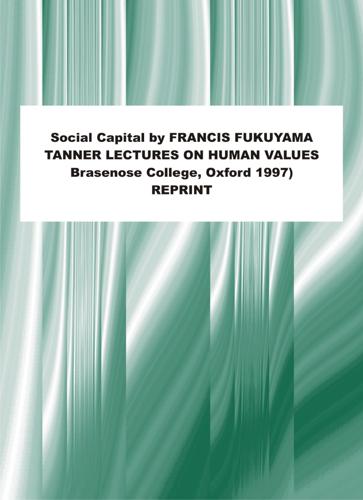
Social Capital and Civil Society
by
Francis Fukuyama
Published 1 Mar 2000
[FUKUYAMA] Social Capital 469 ample, are bound by a common religion and ethnicity, but are also shaped by common experiences of persecution that create solidarities of a different sort. Many cultural phenomena can have relatively recent political or economic roots: hence the postwar German central bank’s emphasis on a strong Deutschmark and a tough anti-inflationary policy is said to be a direct outcome of the German experience with hyperinflation during the Weimar period. 4 . Norms rooted in nature. Despite the changes in family structure described in the first lecture, kinship remains the most powerful form of social relationship in contemporary societies. As I indicated in Trust, the importance of kinship relative to other kinds of social structures varies considerably from one society to another, but there is no society in which it has completely withered away.
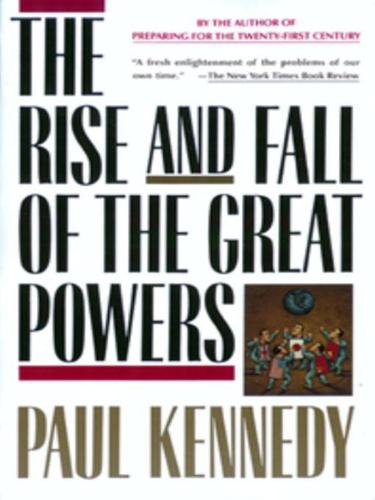
The Rise and Fall of the Great Powers: Economic Change and Military Conflict From 1500 to 2000
by
Paul Kennedy
Published 15 Jan 1989
With the Bolsheviks’ repudiating Russia’s massive borrowings of $3.6 billion, with the Americans asking for their money back, with France, Italy, and other countries refusing to pay off their debts until they had received reparations from Germany, and with the Germans declaring that they could not possibly pay the amounts demanded of them, the scene was set for years of bitter wrangling, which sharply widened the gap in political sympathies between western Europe and a disgruntled United States.13 If it was true that these quarrels seemed smoothed over by the Dawes Plan of 1924, the political and social consequences of this turbulence had been immense, especially during the German hyperinflation of the previous year. What was equally alarming, although less well understood at the time, was that the apparent financial and commercial stabilization of the world economy by the mid-1920s rested on far more precarious foundations than had existed prior to the First World War. Although the gold standard was being restored in most countries by then, the subtle (and almost self-balancing) pre-1914 mechanism of international trade and monetary flows based upon the City of London had not.
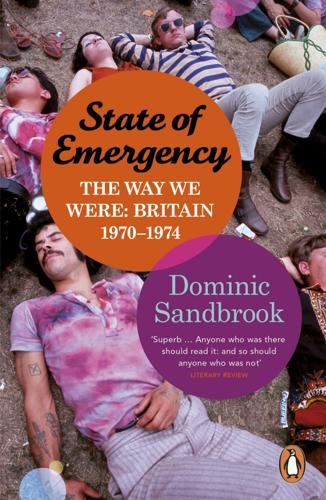
State of Emergency: The Way We Were
by
Dominic Sandbrook
Published 29 Sep 2010
A jolly prospect.’30 At one level, the popularity of the Weimar parallel was a classic illustration of the contemporary obsession with the Second World War, which dominated the British imagination like no other historical event. By the end of 1973, indeed, it seemed that almost no economic setback went by without observers reaching for their textbooks on the German hyperinflation of the 1920s, the collapse of Weimar democracy and the rise of National Socialism. As Sir Alec Guinness, who wore the dictator’s uniform for the wildly sensationalist film Hitler: The Last Ten Days (1973), told Time magazine, ‘the situation in England strikes every month a decadent, yes decadent note.

In Europe
by
Geert Mak
Published 15 Sep 2004
In September 1922, Käthe Kollwitz complained for the first time in her diary about inflation and financial difficulties. ‘How unbelievably expensive things are. This year Karl will earn approximately 300,000 marks, less than half of what we need. If I did not earn the other half, we would also go under, like countless others. So many are becoming impoverished.’ The figures on German hyperinflation are well known: in 1918, the rate was 4 marks to the dollar; in 1922, 400 marks; after the assassination of Rathenau that quickly became 1,000 marks; and by late November 1923 you could get 4,210,500,000,000 marks for a dollar. The Berlin daily newspaper the Deutsche Allgemeine Zeitung cost 30 pfennigs in May 1921; in December 1922, 50 marks; on 1 February, 1923, 100 marks; on 1 June, 300 marks; on 1 July, 1,500 marks; on 1 August, 5,000 marks; on 15 August, 20,000 marks; on 29 August, 60,000 marks; on 12 September, 300,000 marks; and on 19 September, 800,000 marks.
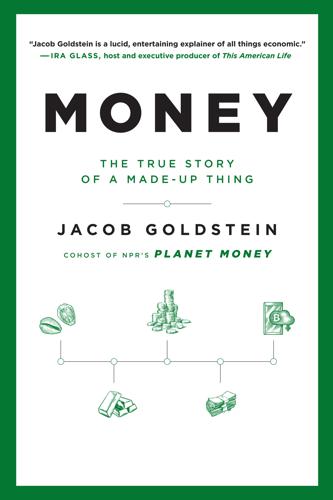
Money: The True Story of a Made-Up Thing
by
Jacob Goldstein
Published 14 Aug 2020
The politicians often wanted to stimulate the economy by creating more money and driving down interest rates, even if it meant higher inflation. The Germans, on the other hand, thought money couldn’t be trusted to politicians. The temptation for the government to create more and more money, and drive inflation higher and higher, seemed too great. The Germans had lived through hyperinflation in the 1920s, when the value of the mark fell by the minute. People would walk into pubs and order two beers at once, because by the time they finished the first one, the price would have gone up for the second. The Germans learned how tenuous the value of money is, and after the war they rebuilt their economy around protecting that value.
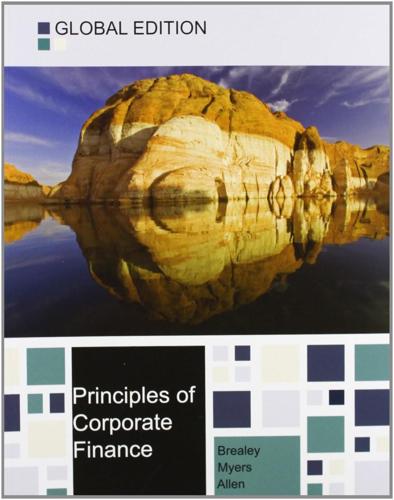
Principles of Corporate Finance
by
Richard A. Brealey
,
Stewart C. Myers
and
Franklin Allen
Published 15 Feb 2014
Several indexes are used to track the general level of prices. The best known is the Consumer Price Index (CPI), which measures the number of dollars that it takes to pay for a typical family’s purchases. The change in the CPI from one year to the next measures the rate of inflation. BEYOND THE PAGE ● ● ● ● ● The German hyperinflation brealey.mhhe.com/c03 Figure 3.5 shows the rate of inflation in the U.S. since 1900. Inflation touched a peak at the end of World War I, when it reached 21%. However, this figure pales into insignificance compared with the hyperinflation in Zimbabwe in 2008. Prices there rose so fast that a Z$50 trillion bill was barely enough to buy a loaf of bread.
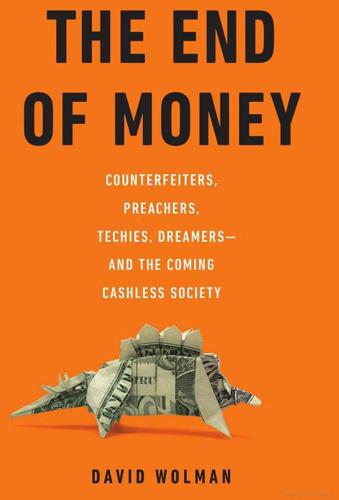
The End of Money: Counterfeiters, Preachers, Techies, Dreamers--And the Coming Cashless Society
by
David Wolman
Published 14 Feb 2012
A $100 hot dog or a $10,000 sheet of plywood only reads like a typo because of our good fortune. Still, those images from pathological instances of hyperinflation are plenty searing: banknotes used as wallpaper in Zimbabwe, swept into the gutter in postwar Budapest, or spilling out of wheelbarrows in Germany like so many leaves. One German artist during the Weimar hyperinflation covered a park bench with 100,000-mark notes. He titled the work “Deutsche Bank,” a pun on the German word for bench, which is bank. We can only pray that the same never happens here. Fears about inflation and hyperinflation may not always be rational, but countermeasures against them sure as hell are.
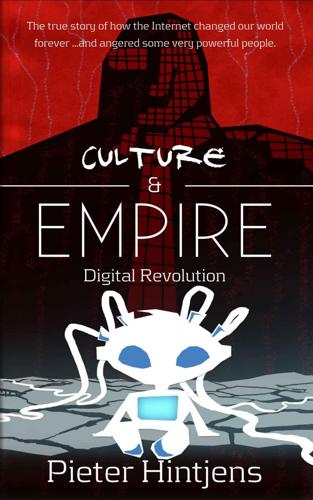
Culture & Empire: Digital Revolution
by
Pieter Hintjens
Published 11 Mar 2013
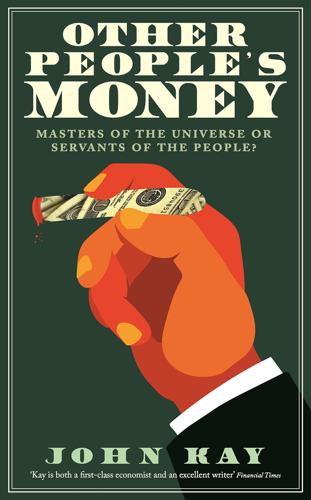
Other People's Money: Masters of the Universe or Servants of the People?
by
John Kay
Published 2 Sep 2015
The Bank of England was in principle a private institution until it was nationalised in 1946, following the twenty-year governorship of the mentally unbalanced Montagu Norman. The Banque de France, on the other hand, has always been effectively an organ of the French state. The post-war Bundesbank had a different constitutional role: to act as autonomous defender of the integrity of the German currency following that country’s history of hyperinflation. This conflict between French and German views of the role of a central bank feeds into different views of the role of the European Central Bank. France and the majority of Eurozone members wish to use the ECB as an instrument of European economic policy. Germany is determined to maintain the bank’s independence – a provision which at Germany’s insistence is enshrined in the Maastricht Treaty, which established the ECB.
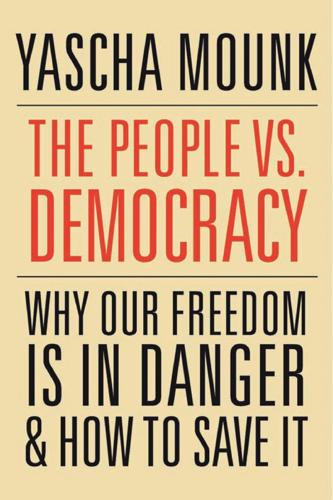
The People vs. Democracy: Why Our Freedom Is in Danger and How to Save It
by
Yascha Mounk
Published 15 Feb 2018
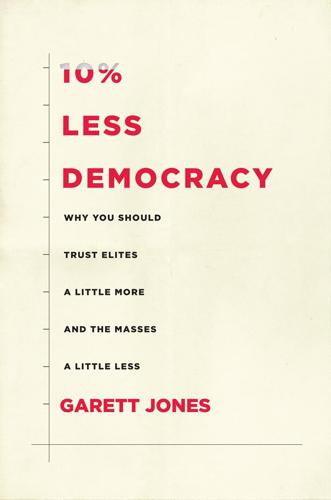
10% Less Democracy: Why You Should Trust Elites a Little More and the Masses a Little Less
by
Garett Jones
Published 4 Feb 2020
How can we know whether it’s the legal independence of the central banks of the United States, Switzerland, and Germany that is getting the job done? For instance, maybe instead it’s “German culture” that makes German inflation low. The classic story, after all, is that the post–World War II German collective memory of the 1920s hyperinflation created a culture that demanded low inflation after the war. And so perhaps an alternate explanation might go that German postwar culture was so insistent on low inflation that Germans bought all the bells and whistles that were supposed to go along with low inflation, including an independent central bank.
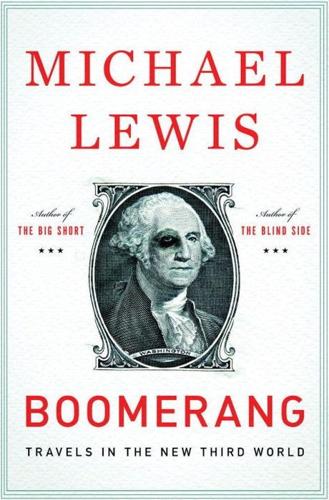
Boomerang: Travels in the New Third World
by
Michael Lewis
Published 2 Oct 2011

When the Money Runs Out: The End of Western Affluence
by
Stephen D. King
Published 17 Jun 2013

Losing Control: The Emerging Threats to Western Prosperity
by
Stephen D. King
Published 14 Jun 2010

The Berlin Wall: A World Divided, 1961-1989
by
Frederick Taylor
Published 26 May 2008

Aftershocks: Pandemic Politics and the End of the Old International Order
by
Colin Kahl
and
Thomas Wright
Published 23 Aug 2021
In 1921, he was chosen as the leader of the National Socialist German Workers’ (Nazi) Party, which had been founded the previous year. In 1923, he took his first gamble for power. Against the backdrop of French and Belgian troops occupying the industrial Ruhr Valley in response to a dispute over German reparations payments and hyperinflation sweeping the country, Hitler joined with Ludendorff and other right-wing officers in a failed coup attempt in Munich. The “Beer Hall Putsch,” as the revolt came to be known, was quashed. Ludendorff was acquitted, but Hitler was convicted of treason and sent to Landsberg Prison, where he dictated his autobiography and manifesto, Mein Kampf (“My Struggle”), outlining his genocidal views and expansionist ambitions.
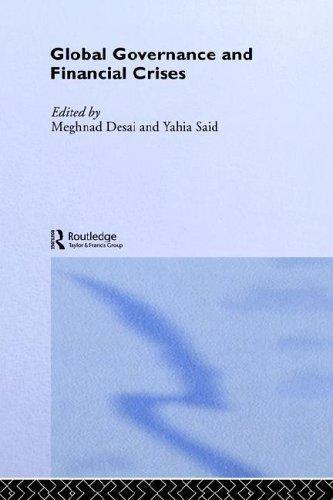
Global Governance and Financial Crises
by
Meghnad Desai
and
Yahia Said
Published 12 Nov 2003
But even then, there have been attempts at seeking separate national explanation for the Great Depression. It has been argued in the case of the USA by Milton Friedman that this was a case of central bank failure on the part of the Fed. British explanations rely on overvaluation of the Pound after the 1925 return to the Gold Standard and the resulting shock to exports. German explanations hinge on the aftermath of the hyperinflation of 1923–24, reparations payments and the sudden reversal of US bank credits after the Great Crash.6 But the crisis and the following downward cycle was an international and not a national phenomenon. And this internationalisation of the crash/panic was much more damaging in this crisis than in any previous crisis.
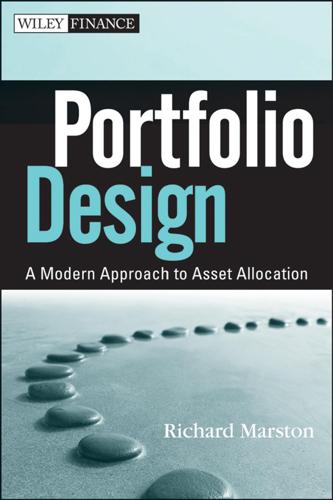
Portfolio Design: A Modern Approach to Asset Allocation
by
R. Marston
Published 29 Mar 2011
Of course, it is possible to trace stock markets much earlier than 1970. Indeed, Dimson et al (2002) reports on the stock returns of many industrial countries for the century from 1900 to 2000. But the quality of national indexes varies widely during earlier periods. For example, how reliable do you think German stock indexes were during the hyperinflation of the 1920s or during the period of the second World War? Hardly any emerging stock markets have data prior to the mid1970s. Global emerging market stock market indexes begin in the mid to late 1980s. This chapter will focus on the last four decades of stock market performance in the industrial countries using the MSCI indexes.

The Spinoza Problem
by
Irvin D. Yalom
Published 6 Mar 2012
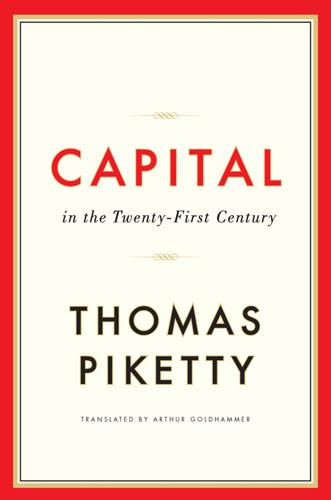
Capital in the Twenty-First Century
by
Thomas Piketty
Published 10 Mar 2014
Despite running large deficits during both world wars (the public debt briefly exceeded 100 percent of GDP in 1918–1920 and 150 percent of GDP in 1943–1944), inflation made it possible in both instances to shrink the debt very rapidly to very low levels: barely 20 percent of GDP in 1930 and again in 1950 (see Figure 4.2).1 Yet the recourse to inflation was so extreme and so violently destabilized German society and economy, especially during the hyperinflation of the 1920s, that the German public came away from these experiences with a strongly antiinflationist attitude.2 That is why the following paradoxical situation exists today: Germany, the country that made the most dramatic use of inflation to rid itself of debt in the twentieth century, refuses to countenance any rise in prices greater than 2 percent a year, whereas Britain, whose government has always paid its debts, even more than was reasonable, has a more flexible attitude and sees nothing wrong with allowing its central bank to buy a substantial portion of its public debt even if it means slightly higher inflation.
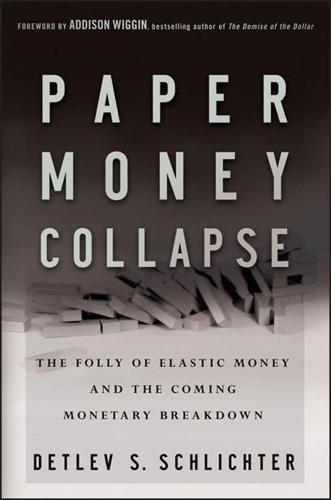
Paper Money Collapse: The Folly of Elastic Money and the Coming Monetary Breakdown
by
Detlev S. Schlichter
Published 21 Sep 2011

Horizons: The Global Origins of Modern Science
by
James Poskett
Published 22 Mar 2022
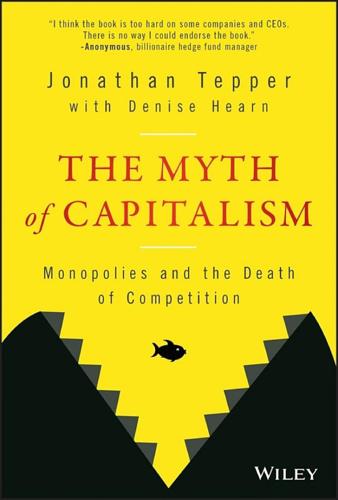
The Myth of Capitalism: Monopolies and the Death of Competition
by
Jonathan Tepper
Published 20 Nov 2018
They bitterly recall their former wealth and blame others for their current misfortune. This was true of British farmers who had suffered during the enclosure movement and gravitated toward Cromwell before the British Civil War (1641–1652). This was certainly the case with the Germans, who lost their wealth due to war and hyperinflation, before the rise of Hitler and the Nazi Party in the 1930s. Today, votes for Sanders, Trump, and Brexit are the expression of discontent by the “Newly Poor.” They feel the system is rigged against them and the future is not as bright as the past. Historian Will Durant warned that societies fall apart when inequality is too severe.
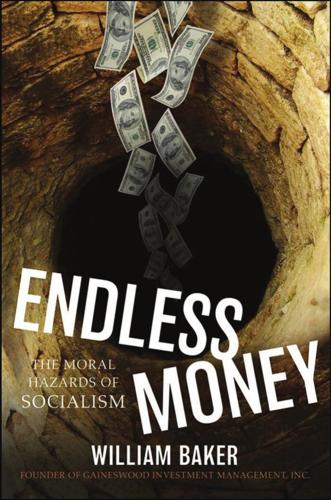
Endless Money: The Moral Hazards of Socialism
by
William Baker
and
Addison Wiggin
Published 2 Nov 2009
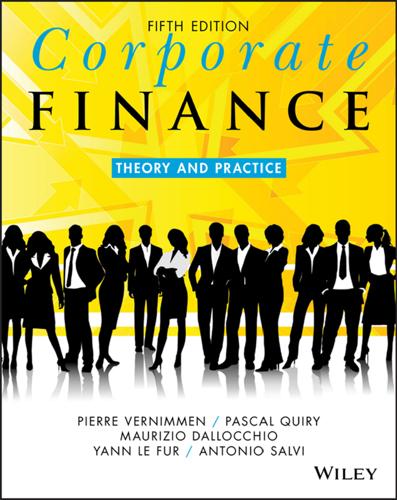
Corporate Finance: Theory and Practice
by
Pierre Vernimmen
,
Pascal Quiry
,
Maurizio Dallocchio
,
Yann le Fur
and
Antonio Salvi
Published 16 Oct 2017
Nevertheless, extreme variations are more frequent than in a normal distribution law, which questions the relevancy of this theory. Source: based on Dimson, Marsh et Staunton (2010) And in worst-case scenarios, it must not be overlooked that some financial markets vanished entirely, including the Russian equity market after the First World War and 1917 revolution, the German bond market with the hyperinflation of 1921–23, and the Japanese and German equity markets in 1945. Over the stretch of one century, these may be exceptional events, but they have enormous repercussions when they do occur. The degree of risk depends on the investment timeframe and tends to diminish over the long term.

A History of France
by
John Julius Norwich
Published 30 Sep 2018

The Music of the Primes
by
Marcus Du Sautoy
Published 26 Apr 2004
Abel, Niels Henrik 66, 223 Adams, Douglas 283 Adleman, Leonard 11, 228–32, 229, 236, 238, 240, 249 Agrawal, Manindra 245 American Mathematical Society 224, 301, 304 Analytical Engine (Babbage) 190 Apollonius 61 Appel, Kenneth 211, 212 Arago, François 45 Archimedes 52, 61 Armengaud, Joel 208 Aronofsky, Darren 28 astronomy 208 AT&T 12, 219–23, 254, 270, 273, 280, 281, 311 Atkins, Derek 239 atoms 264–9, 277, 278 axioms, consistent 179–80, 181 Babbage, Charles 189–90, 191 Babylonians 67 Baker, Alan 16, 256, 258 Bamberger, Louis 160 Barnes, Ernest 126–7 Bell Laboratories 219, 238 Berndt, Bruce 146 Berry, Sir Michael 84, 278–80, 283, 285–6, 307, 311 Bertrand, Joseph 164 Bertrand’s Postulate 164, 169–70 Bessel-Hagen, Erich 151, 154 ‘Bible code’ 271, 275 Birch, Bryan 250–52 Birch-Swinnerton-Dyer Conjecture 246, 250–51, 252 Bletchley Park, Milton Keynes, Buckinghamshire 174, 175, 190, 191, 192, 204, 205, 206, 226, 311 Bloomsbury publishing house 15–16 Bohr, Harald 117, 118, 119, 121–2, 123, 156, 159 Bohr, Niels 117 Bois-Reymond, Emil du 113 Boiteux, Marcel 299 Bolyai, János 110 Bombieri, Enrico 8, 13, 19, 193, 218, 231, 307 faith in the Hypothesis 10, 214–15, 219 Fields Medal 16, 308 joke email announces the Riemann Hypothesis proved 2,3,4,9,12–14, 19, 102, 285, 309 studies the Reimann Hypothesis as a teenager 2–3, 5 Bonne-Nouvelle military prison, Rouen 289, 294, 297, 298 Born, Max 267 Bourbaki group 292, 299, 300–301 Brent, Richard 217 Brewster, Edwin Tenney 176 Brunswick, Carl Wilhelm Ferdinand, Duke of 22, 51, 57 BSI (German Security Agency) 231, 240, 250 Cameron, Michael 209 Cantor, Georg 185–6, 201, 202 Carr, George 132, 133 Carroll, Lewis 82, 283 Cartan, Elie 289, 290, 295–6, 297 Cartan, Henri 297 Castelnuovo, Guido 296 Catherine the Great 41, 42, 43 Cauchy, Augustin-Louis 65–6, 70–71, 72, 75, 81, 84, 103, 113, 194, 289, 291 Central Limit Theorem 176, 177 Ceres 19, 20, 49, 54, 57 Certicom 249, 252–3 Changeux, Jean-Pierre 7 chaos theory 276, 280 Chebyshev, Pafnuty 104, 164, 168 Chinese 22–3 Chladni, Ernst 265, 266 Choquet, Gustave 288 Chowla, Saravadam 170, 171, 263 Church, Alonzo 187 Churchill, Sir Winston 175 Class Number Conjecture 257–8 Clay, Landon T. 14–17, 33, 242, 246, 252 clock calculator 20–22, 29, 30, 74, 76, 168, 232–5, 238, 239, 240, 249, 295 Cohen, Paul 16, 201–2, 282, 304, 308 Cold War 199 Cole, Frank Nelson 224–5, 236, 244 computers 193, 203, 204–23, 311 Connes, Alain 3, 4, 7, 14, 16, 288–9, 305–9, 311 Conrey, Brian 173, 281, 283–5 Cray computers 207, 208, 220–21, 270 Cray Research 207, 208, 209 Critical line 99 cryptography 224–54 d’Alembert, Jean Le Rond 111 Davenport, Harold 126 Davis, Martin 198 de la Vallée-Poussin, Charles 106, 117, 127, 128, 168, 172, 311 De Morgan, Augustus 43 Decision Problem (Hilbert) 184, 186, 187, 188, 197 Dedekind, Richard 73, 106, 151, 153 Deligne, Pierre 16, 146 Descartes, René 62, 70, 111 Deuring, Max 258 Diaconis, Persi 271–5, 273 Diderot, Denis 42–3 Dieudonné, Jean 292 Difference Engine (Babbage) 189 Diffie, Whit 226–9 Diophantus 29 Lejeune-Dirichlet, Rebecka 75 Dirichlet, Peter Gustav Lejeune 64, 65, 73, 75, 76, 81, 82, 83, 100, 102, 106, 116, 134, 150, 155, 168–9 Dirichlet’s Theorem 81, 168–9 Doxiadis, Apostolos 15 Drazin, Philip 286 Dyson, Freeman 262–4, 267, 269, 275, 312 e-business 11, 74, 241, 246, 253 ECC Central 249, 250 Eddington, Arthur 110, 128 Egypt/Egyptians 67, 94 Einstein, Albert 2, 74, 161, 162, 166, 179, 307 Theory of Relativity 100, 289 electromagnetism 73–4 Electronic Frontier Foundation 209 electrons 265, 267, 268, 277 elliptic curves 246, 249, 251–2, 253 Encke, Johann 55, 56, 72 Enigma code 175, 190–91, 192, 205, 206, 225, 226, 242 equations 107, 113, 114, 193, 197–201, 295, 296 Eratosthenes 23, 239 erbium 264 Erdos, Paul 162–5, 168–71, 173, 176, 209, 219, 238, 245, 262, 311–12 Euclid 36–8, 37, 58, 61, 76, 81, 102, 109, 110, 111, 163, 178, 204, 205, 209, 243, 292, 301, 310 algorithm 16 Euler, Leonhard 41–5, 42, 57, 71–2, 77, 79–80, 86–9, 93, 97, 102, 104,105, 106, 113, 133, 135, 150, 162, 200, 223, 233, 235, 266 Euler’s product 17, 80–81, 89 Faber & Faber 15–16 Faber-Bloomsbury Goldbach prize 15–16 factorising numbers 236–8, 257–8, 259, 261 Felkel, Antonio 47 Feller, William 272 Fermat, Pierre de 5, 22, 29, 39–41, 44, 68, 76, 101, 122, 133, 136, 154, 168, 223, 231, 232, 233, 238, 292 Factorisation Method 238–9 Last Theorem 5, 12–16, 29, 33, 34, 44, 101, 113–14, 115, 118, 119, 136, 171, 193, 228, 233, 248, 251, 282, 289, 296, 298, 308 Little Theorem 8–9, 232, 233, 235, 238, 244 Feynman, Richard 262, 263, 285 Fibonacci, Leonardo 25–6 Fibonacci numbers 25, 26, 27, 142, 204, 206 Fields, John 16 Fields Medals 16, 146, 172, 202, 246, 289, 302 First World War 144, 145, 148, 155, 292 Five Hysterical Girls Theorem, The (off-Broadway show) 224 Flannery, Sarah 246–8, 249 Four-Colour Problem 210–12, 210 Fourier, Joseph 60, 93–6, 291 Fourier series 17 fourth dimension 84, 85 fractions 67 Frederick Barbarossa, Emperor 1–2, 115 Frederick the Great 41 French mathematical tradition 69–70, 72, 108 French Revolution 17, 53, 60, 94, 119, 291 Frenicle de Bessy, Bernard 233 Frey, Gerhard 204 Fry, John 281, 284 Fry Electronics 281, 282 Fuld, Caroline Bamberger 160 functions 71–2 Gage, Paul 207, 208 Galileo Galilei 269 Gandhi, Mahatma M.K. 293 Gardner, Martin 230–31, 236 Gauss, Carl Friedrich (main references) 21, 26, 52 background and childhood 20 Class Number Conjecture 257–8 clock calculators 20–22, 29, 30, 74, 232, 233, 234, 249, 295 death 74 director of Göttingen Observatory 57–8 discovery of Ceres’ path 19–20, 24, 49, 54, 64 discovery of a pattern in primes 47–51, 57 failure to disseminate his discoveries 20, 52–3 geometry 109–10, 202 and Germain 193–4 imaginary numbers 69, 71, 84, 85, 221, 257–8, 260–61 lateral thinking 25 logarithms 46–7, 55, 62, 72, 74, 91, 206 methods outstrip Legendre’s 56–7 patronage 22, 51–2 prime motivation 52 Prime Number Conjecture (later Theorem) 49, 53–4, 54, 57, 82, 83, 89, 90, 91, 97, 100, 103–6, 117, 134, 138, 142, 164–8, 170–73, 176, 243, 262, 270, 281, 291, 295, 308, 310–13 second conjecture 57, 128–30 stresses the value of proof 51 triangular numbers 25, 26, 26, 29, 32, 52 and Weber 73–4 Dirichlet succeeds 75 Gaussia 75 Gaussian integers 17 geometry 4, 61, 62, 67, 70, 74, 84, 87–8, 100, 109–13,178, 180, 202, 282, 289, 300, 306–7, 313 algebraic 296, 298, 302, 305, 306 Cartesian 111 non-commutative 288–9, 305, 309 Germain, Sophie 193 Germain primes 193 German Mathematical Society 108 Germany: educational revolution 60, 72 hyperinflation 118 Nazi 156 Ghosh, Amit 283 Gödel, Kurt 1, 2, 177, 178–84, 179, 187, 196, 197, 201, 256, 257, 263, 302, 312 Incompleteness Theorem 181, 182, 184, 186, 190 Gödel numbering 17, 181 Goethe, Johann Wolfgang von 59 Goldbach, Christian 44 Goldbach’s Conjecture 15–16, 31, 115, 141, 143, 158, 181, 182, 183, 256 golden ratio 27 ‘golden shield’ 253 Gonek, Steve 284, 285 Göttingen 62–4, 106, 118–9 Göttingen Library 73, 151, 154, 286–7 Göttingen Observatory 57 ‘Göttingen Seven’ 74 Gowers, Timothy 246 Graff, Michael 239 Grand Prix des Sciences Mathématiques (Paris Academy) 95, 104–5, 108, 116 Great Internet Mersenne Prime Search (GIMPS) 208 Greeks 20, 23, 29, 32, 34–5, 36, 41, 51, 61, 67, 68, 81, 84, 105, 106–7, 109, 110, 169, 178, 181, 194, 224 Greene, Graham 34 Griffith, C.L.T. 135 Grothendieck, Alexandre 16, 298, 299–306, 300, 303, 308 Guthrie, Francis 210, 211 Hadamard, Jacques 105, 106, 117, 127, 128, 134, 168, 172, 291, 311 Hajratwala, Nayan 209 Haken, Wolfgang 211, 212 Hardy, G.H. 11, 17, 30–31, 33, 38–9, 78, 119–23, 124, 153, 162–3, 165, 175, 212–13, 301, 313 on the difficulty of the primes 132 and Landau 155 and Littlewood 123–8, 132, 137–8, 143, 147, 152, 158–9, 170, 177, 256, 259, 260, 283 and Ramanujan 136–47, 158, 162 and Riemann Hypothesis 120, 121–2, 125–6, 150, 188, 312 and Skewes Number 129 and Turing 187, 188, 190 on uselessness of mathematics in real world 222–3, 250 Hardy-Littlewood Circle Method 17, 143 harmonic series 79, 80 Hasse, Helmut 251 Hawking, Stephen 84, 180 Hecke, Erich 258 height function 253 Heilbronn, Hans 128, 258 Heisenberg, Werner 267 Uncertainty Principle 180, 305 Hellman, Martin 227–8, 228, 229 Hermite, Charles 103, 104–5 Heuser, Ansgar 231, 240 Hewlett-Packard 12, 280, 281, 311 Hilbert, David 102, 106–16, 107, 108–9, 118, 125, 128, 148, 153, 155–6, 175, 191, 193, 291 brings best mathematicians to Göttingen 118, 119 death 156 Decision Problem 184, 186, 187, 188, 197 equations 107, 114, 193, 197–8, 199 geometry 109, 110–11, 178, 180 and Gödel 178, 179, 180, 182 and Hardy 119–20 lecture to International Congress of Mathematicians 1, 2, 112–15, 183–4 and a new approach 14–15, 112 and Noether 194 and Riemann Hypothesis 1–2, 17, 106, 114, 115, 243, 312 sets twenty-three problems 1–2, 113–15, 282 and Siegel 149, 152 tenth problem 114, 183, 197–9 Hilbert space 16 Hill, M.J.M. 135, 136 Hindu mathematicians 68 Hitler, Adolf 155, 160, 251, 291, 293 Hodges, Andrew 190 Humboldt, Alexander von 64, 75 Humboldt, Wilhelm von 59, 60, 64, 237 hydrogen 268 Hyperion (a satellite of Saturn) 24 imaginary numbers 66–72, 70, 81, 82, 84, 85, 86, 88, 103, 113, 115, 119, 221, 251, 257–8, 259, 261, 266, 267, 286, 287, 289, 300 infinities 185–6 Ingham, Albert 188, 283 Institut des Hautes Etudes Scientifiques, Paris 299, 303 International Congress of Mathematicians 1, 2, 3, 16, 17, 112, 115, 172, 183–4, 208 Internet 11–12, 74, 225–32, 247 irrational numbers 6, 67, 68, 68 Ishango bone 22 Iyer, Ganapathy 136 Iyer, Narayana 139 Jacobi, Carl 59–60, 75, 139 Jacquard weaving looms 189–90 James, Henry 34 Jordan, Camille 123 Kabalah 240 Kac, Mark 165 Kant, Imannuel 112 Katz, Nick 308 Kayal, Neeraj 245 Keating, Jon 283, 284, 285–7 Kelvin, Lord 95 Kingsley, Ben 240 Klein, Felix 108, 150, 153 Klondike (Idiot’s Delight) card game 274–5, 274 Koblitz, Neal 248–9, 250, 253 Königsberg (later Kaliningrad) 43, 106, 108, 178 Krieger, Samuel I. 196 Kulik, Jakub 56 Kummer, Ernst 150 Lagrange, Joseph-Louis 65, 301 Landau, Edmund 116–18, 117, 128, 132, 137, 143, 148–9, 152–5, 301 Landau, Leopold 148 Landau, Lev 268–9, 270 Lascar, Larry 240 Legendre, Adrien-Marie 53, 54, 56–7, 60, 62, 95, 132, 261–2 Lehmer, Derrick H. 196, 204, 206, 207, 215 Lehmer, D.N. 196, 204, 205–6 Leibniz, Gottfried 77–8, 119 Lenstra, Arjen 239 Lenstra, Hendrik 218, 237 Levinson, Norman 172–3 Leyland, Paul 239 Lindeberg, J.W. 176, 177 Linnik, Yu.
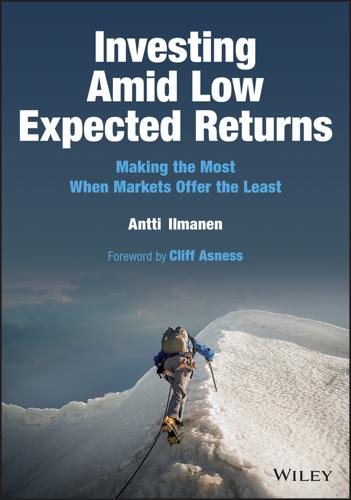
Investing Amid Low Expected Returns: Making the Most When Markets Offer the Least
by
Antti Ilmanen
Published 24 Feb 2022
At the time of writing, the US stands out among major economies by offering a near-zero cash rate instead of a negative one.2 Figure 4.2 Average Inflation and Real Cash Return 1900–2020 Source: Data from Dimson-Marsh-Staunton (2021). Copyright © Elroy Dimson, Paul Marsh, and Mike Staunton. Notes: This bar chart shows G5 countries without Germany. German experience looks similar to France, excluding the 1923 hyperinflation. It is easy to observe the current cash rate but the expected cash rate over the next decade or longer is not directly observable. To estimate future average cash returns, we can study some combination of survey evidence, market forwards/futures or bond yields (possibly contaminated by term premia), historical averages, term structure models, or macroeconomic estimates.

Manias, Panics and Crashes: A History of Financial Crises, Sixth Edition
by
Kindleberger, Charles P.
and
Robert Z., Aliber
Published 9 Aug 2011
Many foreigners bought francs as the currency depreciated in 1919–20 in anticipation of large revaluation gains from the subsequent appreciation toward its pre-war parity – but they eventually gave up and sold.39 Speculators in Amsterdam, Vienna, and Berlin (perhaps stimulated by the German government) sold francs in anticipation that they would be able to purchase them later at much lower prices.40 The story was that speculators who had profited from their short positions in the German mark as it depreciated sharply in the hyperinflation of 1923–24 then turned their attention to the French franc. Hundreds of thousands of Frenchmen with liquid securities denominated in the franc watched signals like the advances from the Bank of France to the French government approach the legal ceiling. On 4 March 1924 panic broke out.
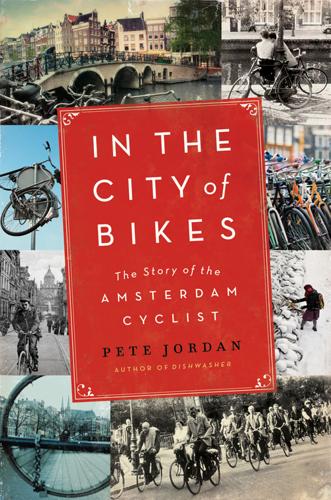
In the City of Bikes: The Story of the Amsterdam Cyclist
by
Pete Jordan
Published 20 Aug 2012
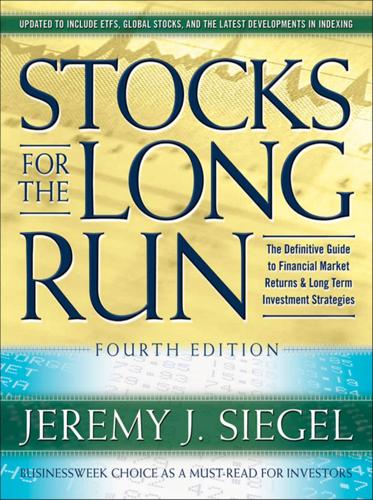
Stocks for the Long Run, 4th Edition: The Definitive Guide to Financial Market Returns & Long Term Investment Strategies
by
Jeremy J. Siegel
Published 18 Dec 2007

The Fire and the Darkness: The Bombing of Dresden, 1945
by
Sinclair McKay
In addition to this, Klemperer’s strong sense of his Germanic identity was allied to a feeling that Protestantism was its most natural cultural expression. Klemperer found secure tenure at the Technical University in Dresden. His field was philology and the Romance languages, as well as German studies. Amid the chaos of the 1920s – the hyperinflation, the national humiliation both of reparations and of the French occupation of the Ruhr and the resultant foaming, highly aggressive extremists on all political fronts – Klemperer and his wife none the less found their own sort of stability. Hitler’s ascendancy to the chancellorship in 1933 might just have been foretold, but the speed at which virulent, spitting Jew-hatred became embedded in day-to-day German culture could not.
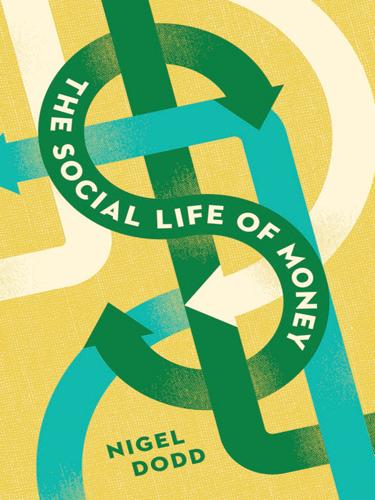
The Social Life of Money
by
Nigel Dodd
Published 14 May 2014
This is an appropriate moment to turn to Benjamin, because he also invokes the Übermensch to make sense of an economic condition in which our very capacity for exercising self-responsibility has been threatened, or even suspended, namely, debt. CAPITALISM, DEBT, AND RELIGION In “One-Way Street” (originally published 1923–1926, 1996e cited here), Walter Benjamin acts as our guide on “A Tour Through the German Inflation.” He was referring to the Weimar hyperinflation of 1921–24. Money, he observes, “stands ruinously at the centre of every vital interest” (Benjamin 1996e: 451–52).2 “Money and rain belong together,” he continues in “Tax Advice,” imagining a “cloudless realm of perfect goods, on which no money falls” (Benjamin 1996e: 481).
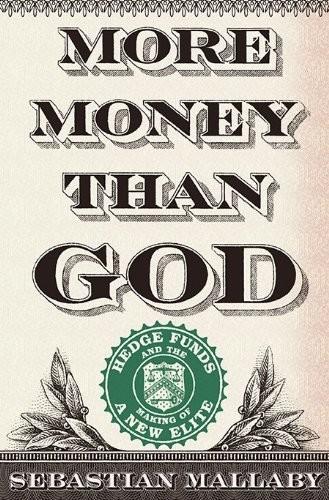
More Money Than God: Hedge Funds and the Making of a New Elite
by
Sebastian Mallaby
Published 9 Jun 2010

Berlin: Life and Death in the City at the Center of the World
by
Sinclair McKay
Published 22 Aug 2022
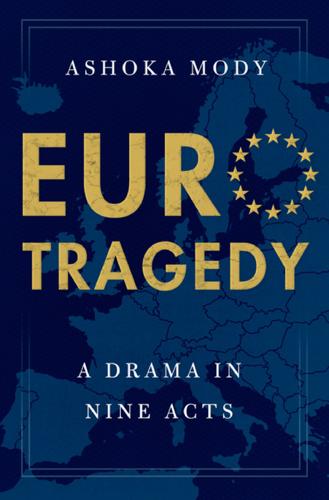
EuroTragedy: A Drama in Nine Acts
by
Ashoka Mody
Published 7 May 2018
Progress on both those fronts would have dampened domestic inflationary pressures, made the French economy more competitive, and made French citizens more prosperous. The contrast with German economic performance was striking. German companies held a dominant position in the global exports of sophisticated industrial products. Moreover, with German citizens still haunted by the memories of interwar hyperinflation and the accompanying political calamity, the Deutsche Bundesbank, Germany’s central bank, had kept a determined lid on inflation. The combination of high productivity growth and low inflation led to large excesses of exports over imports and, hence, to chronic current account surpluses.53 Because German products were in such 34 e u r o t r a g e d y great demand, international buyers perpetually scrambled for German D- marks, and German authorities were always under pressure to revalue the D- mark (to make it more expensive) and thus dampen the incentive of foreign buyers to purchase German goods.
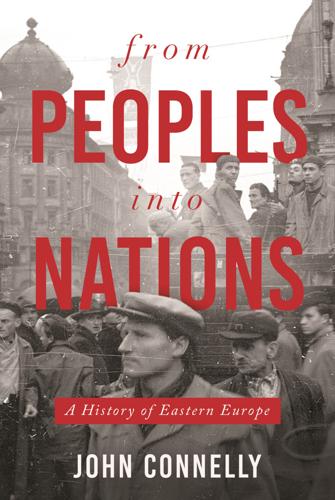
From Peoples into Nations
by
John Connelly
Published 11 Nov 2019
Even in regions of mixed ethnicity where space has been hotly contested for generations, national identity is far from an everyday concern: people think of themselves in terms of age, or gender, or village, or profession. Yet nationalism remains a “crisis frame” of reference that politicians can appeal to when opportune, for example, in the enduring economic crisis of the 1930s, when radio stations in Germany spewed hate-filled messages to Germans living in Czechoslovakia, or during the hyperinflation that wracked Serbia in the 1980s when the banker Slobodan Milošević discovered the nationalist in himself and rose to power by resurrecting fears that Serbs faced “extinction.”28 This crisis frame is not something one finds in Western European or Russian nationalism. During the worst days of World War II, few worried that the Dutch, French, or Russian peoples would become extinct.

The House of Morgan: An American Banking Dynasty and the Rise of Modern Finance
by
Ron Chernow
Published 1 Jan 1990